Natural clay siding offers a timeless connection to the earth, wrapping homes in warm, organic hues that blend seamlessly with the landscape. This durable material, derived from natural sources, provides a rich and textured finish that synthetic options struggle to replicate. From deep, sun-baked terracottas to soft, sandy beiges and muted greens, the palette is both versatile and grounding. Exploring different home designs reveals how these earthen colors can define architectural character, whether creating a rustic retreat, a sleek modern statement, or a cozy suburban dwelling. Clay siding colors bring an authentic and enduring beauty to any home's exterior.
1. Terracotta Red Natural Clay Siding with Black Trim
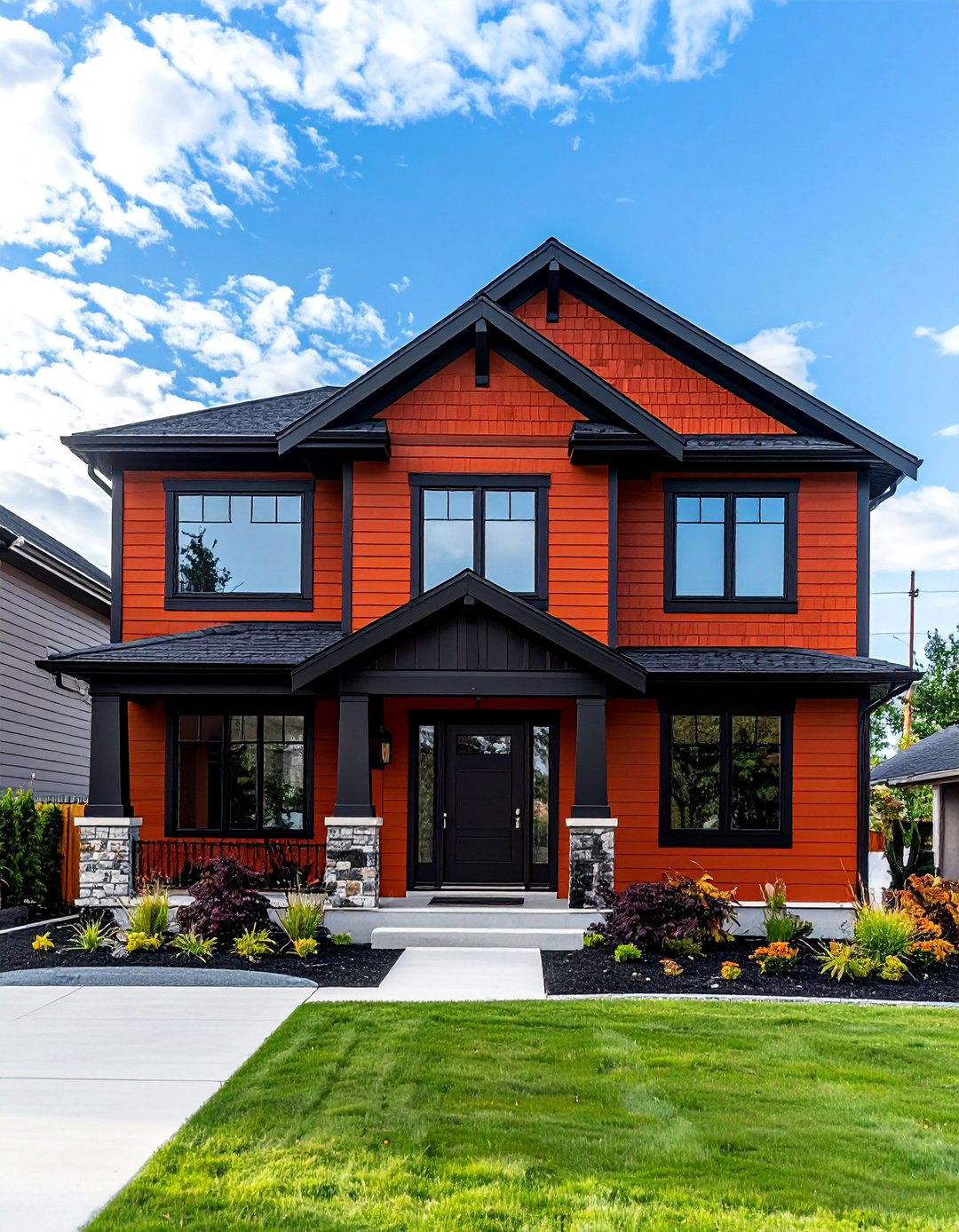
A bold and classic choice, deep terracotta red natural clay siding creates a striking visual impact that is both warm and sophisticated. This rich, earthy hue evokes the sun-drenched landscapes of the Mediterranean and the American Southwest. When paired with crisp, black trim around windows, doors, and the roofline, the contrast is stunningly modern. The black elements act as a sharp frame, accentuating the architectural lines of the home and making the terracotta color appear even more vibrant. This combination is perfect for contemporary or transitional designs, offering a powerful statement that feels grounded, confident, and deeply connected to natural elements while maintaining a clean, polished finish.
2. Soft Beige Natural Clay Siding with Wood Accents
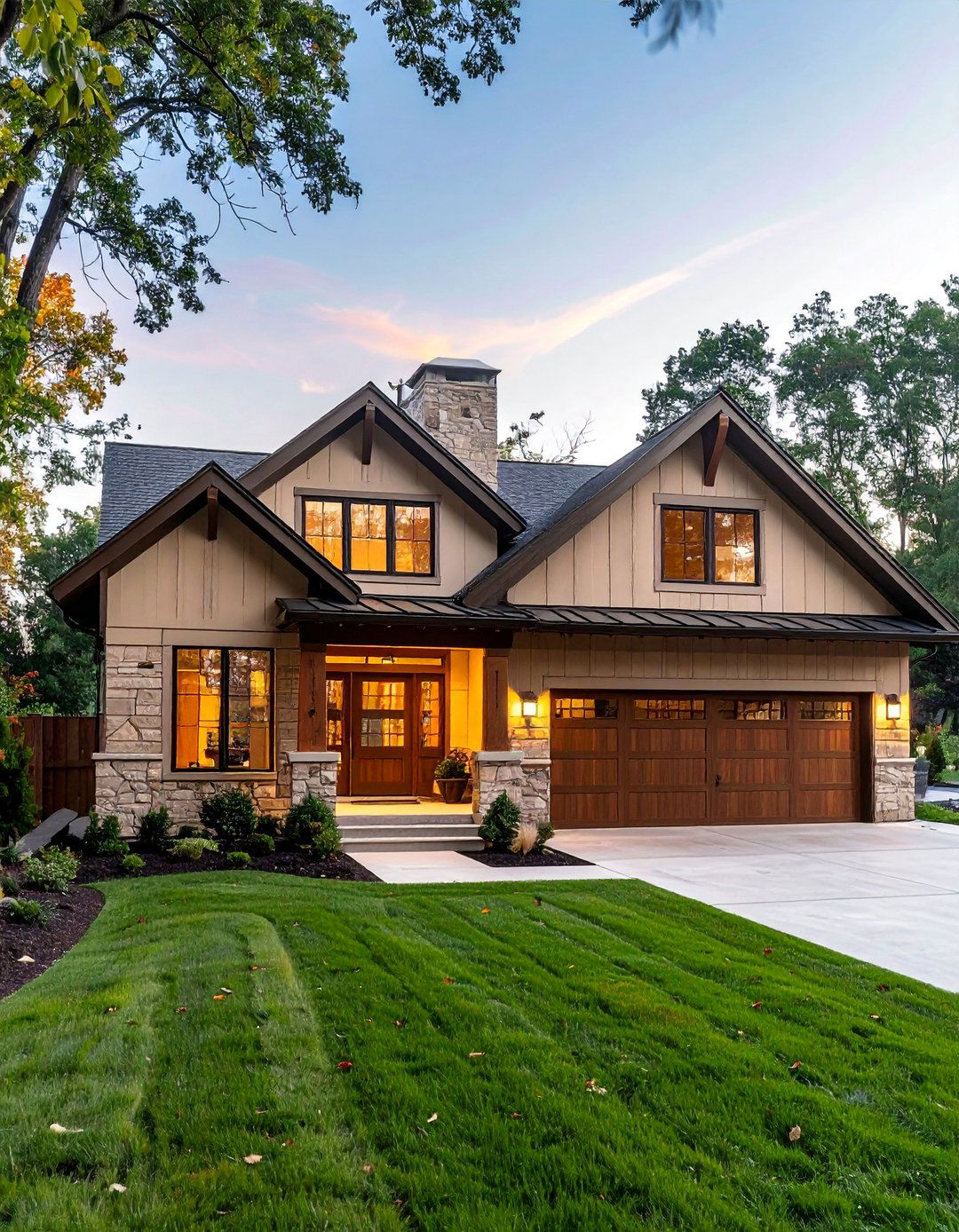
For a home that exudes understated elegance and tranquility, soft beige natural clay siding is an excellent selection. This gentle, sandy color provides a bright and welcoming facade that reflects light beautifully, making the home feel open and airy. To enhance its natural appeal, pairing it with warm wood accents is key. Consider incorporating cedar or oak for beams, porch columns, garage doors, and window shutters. The organic texture and rich grain of the wood create a harmonious and inviting aesthetic, celebrating natural materials. This design is ideal for coastal, Scandinavian, or modern rustic homes, resulting in a serene and sophisticated exterior with timeless appeal.
3. Earthy Brown Natural Clay Siding on a Modern Farmhouse
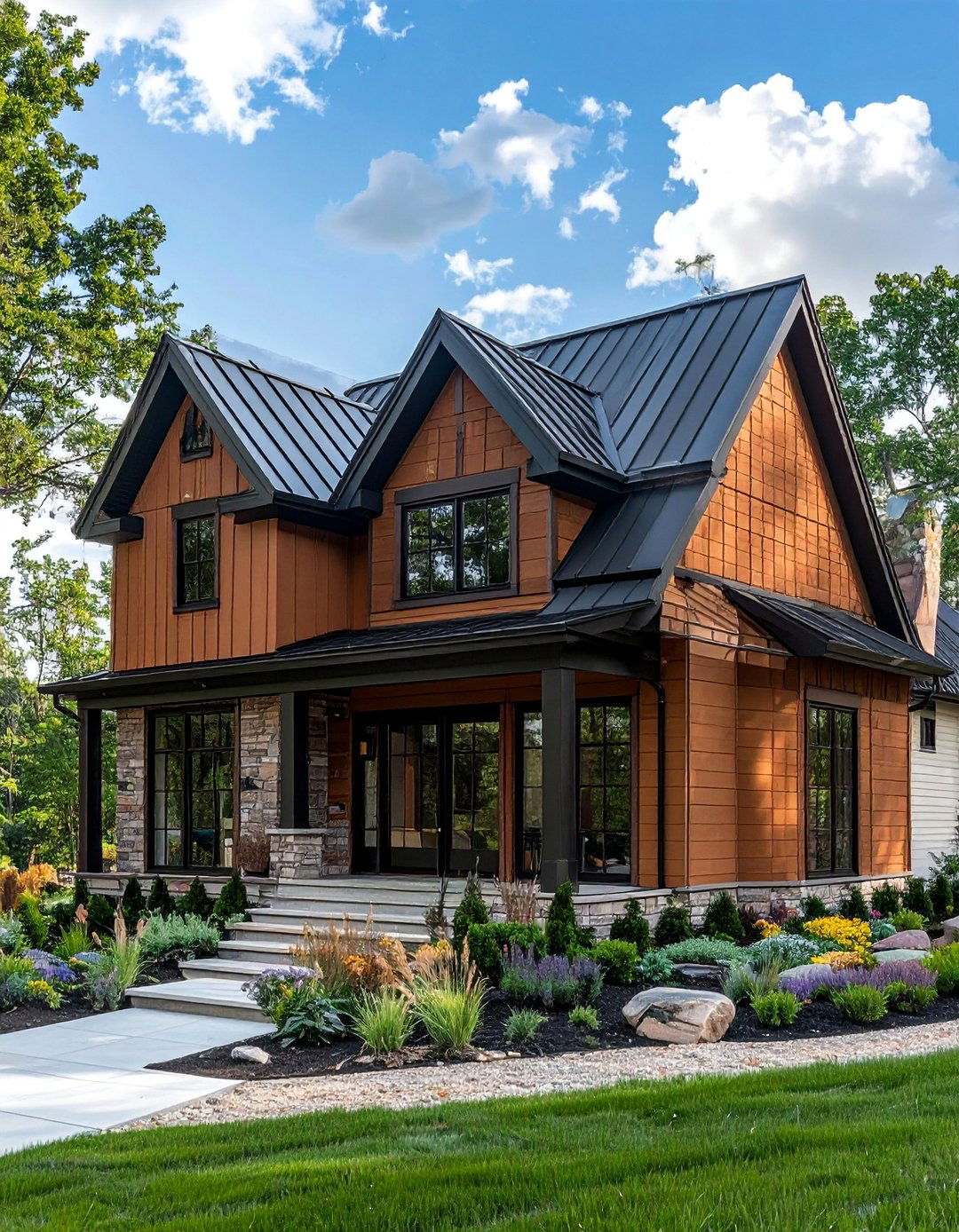
An earthy brown natural clay siding brings a new level of warmth and authenticity to the modern farmhouse style. Moving beyond the typical white board-and-batten, this deep, soil-inspired color grounds the home in its surroundings, giving it a substantial and enduring presence. The rich brown hue pairs exceptionally well with classic farmhouse elements like a standing-seam metal roof in charcoal or bronze, large black-framed windows, and a welcoming front porch with simple, clean lines. This approach maintains the beloved farmhouse silhouette while infusing it with a unique, organic character that feels both rustic and contemporary, creating a home that is both stylish and deeply comforting.
4. Two-Tone Design with Light and Dark Natural Clay Siding
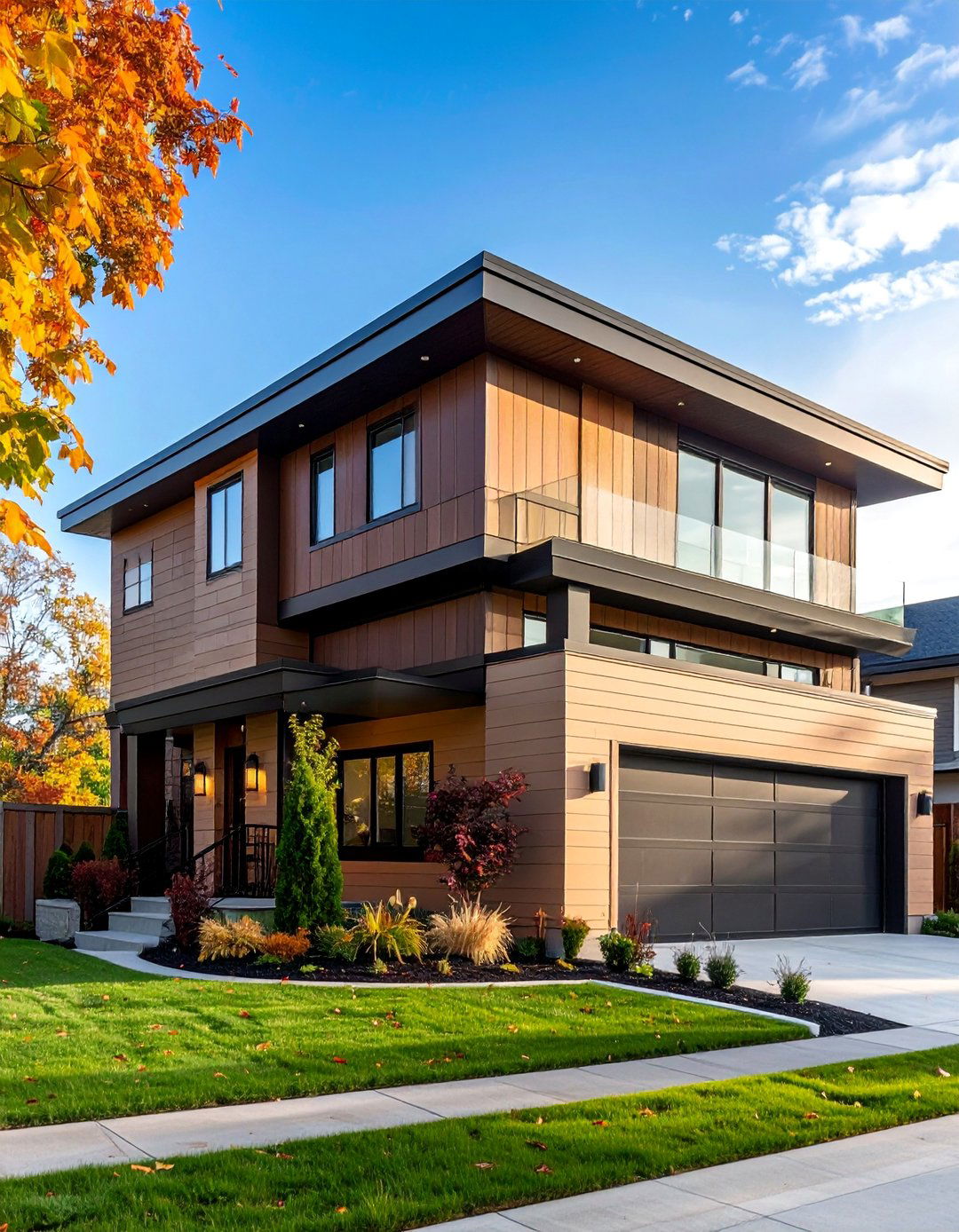
Creating architectural interest is simple with a two-tone design using contrasting shades of natural clay siding. This approach allows you to highlight specific features of your home, such as gables, entryways, or different levels. For instance, you could use a light, sandy-colored clay siding for the main body of the house and a darker, chocolate-brown clay siding for an accent wall or the upper story. The interplay between the light and dark tones adds depth, dimension, and a custom-designed feel. This strategy works well on contemporary, prairie-style, or multi-level homes, breaking up large wall surfaces and guiding the eye across the facade for a dynamic and visually engaging result.
5. Muted Green Natural Clay Siding for a Woodland Home
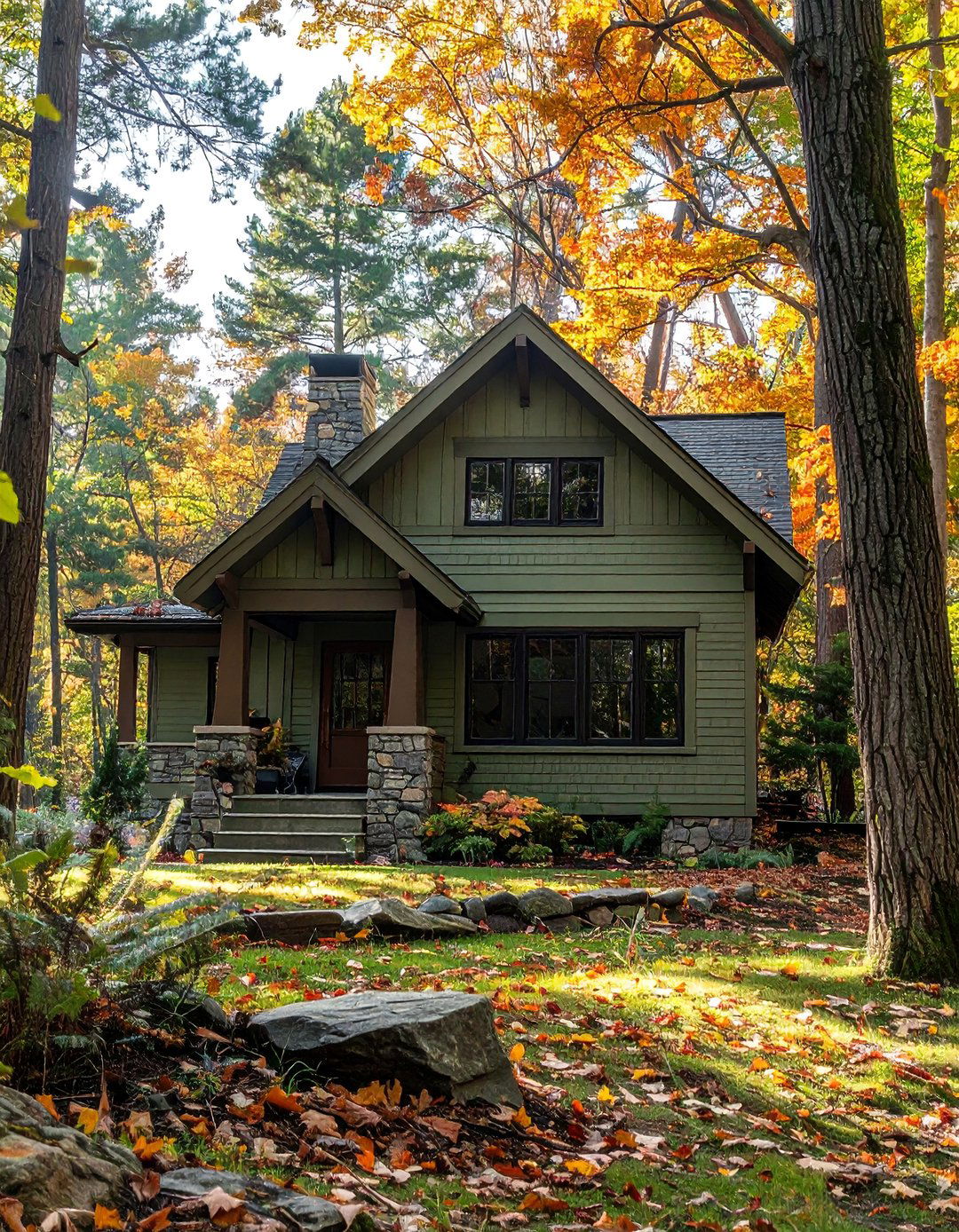
A home nestled among trees deserves an exterior that complements its environment, and muted green natural clay siding is the perfect solution. This subtle, sage-like color mimics the soft hues of foliage, allowing the house to blend harmoniously with a wooded landscape. Unlike vibrant greens, a muted tone feels organic and calming, creating a peaceful retreat. This color looks stunning when paired with natural stone foundations, dark bronze window frames, and a deep brown or charcoal roof. The overall effect is one of serene integration, where the architecture respects and enhances its natural setting. It’s an ideal choice for cabins, Craftsman-style homes, or any residence in a forested area.
6. Southwestern Style with Burnt Orange Natural Clay Siding
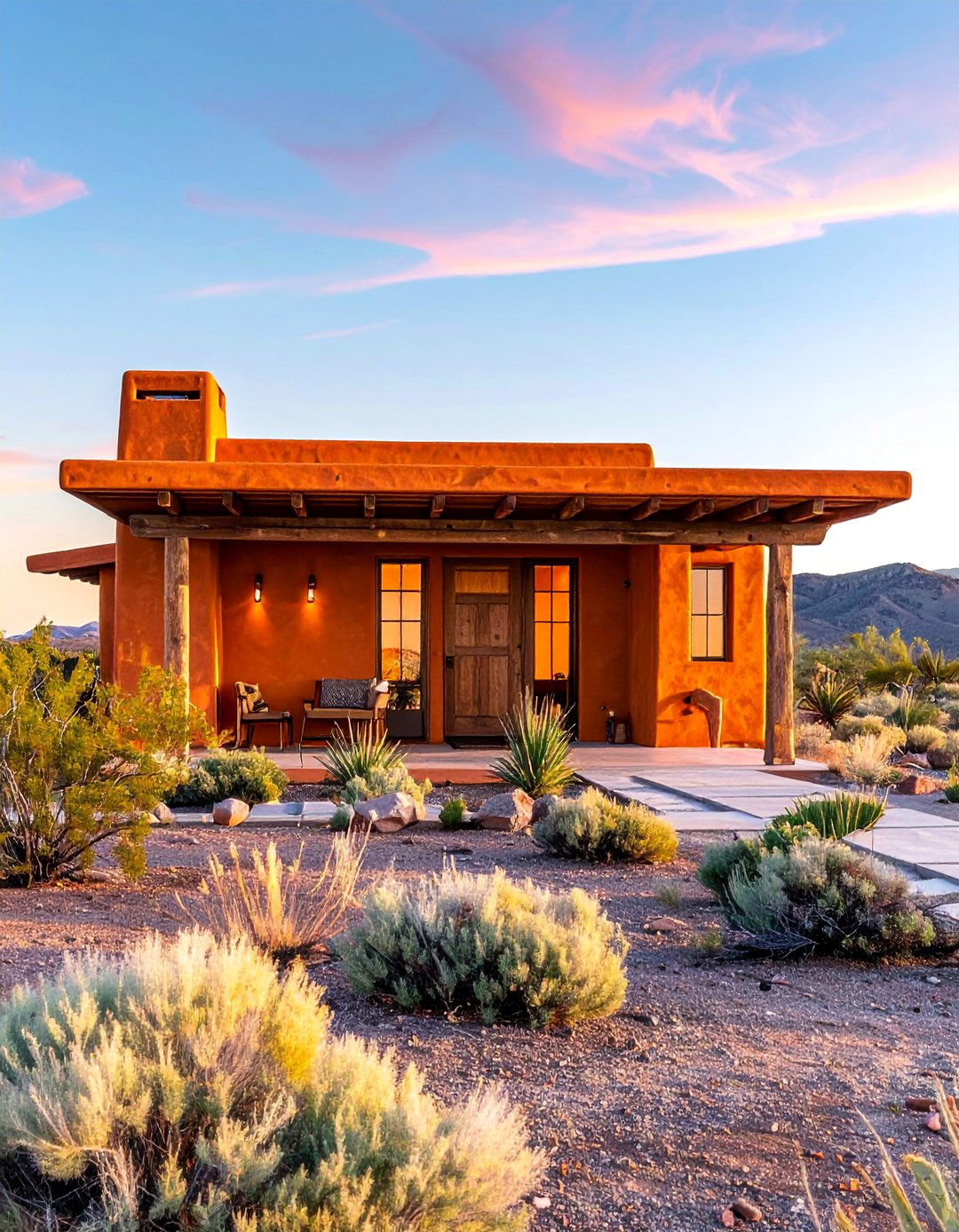
To achieve an authentic Southwestern aesthetic, burnt orange natural clay siding is the definitive choice. This vibrant yet earthy color captures the essence of sun-baked adobe and desert sunsets. It radiates warmth and creates a welcoming, energetic facade that is central to Southwestern design. Complement this siding with features like flat or low-pitched roofs, exposed wooden beams (vigas), and arched doorways. For trim and accents, consider turquoise for a traditional pop of color on doors or window frames, or stick to dark wood and wrought iron for a more rustic feel. This design choice creates a home that is not just built on the land but feels like a part of it.
7. Light Tan Natural Clay Siding with a Metal Roof
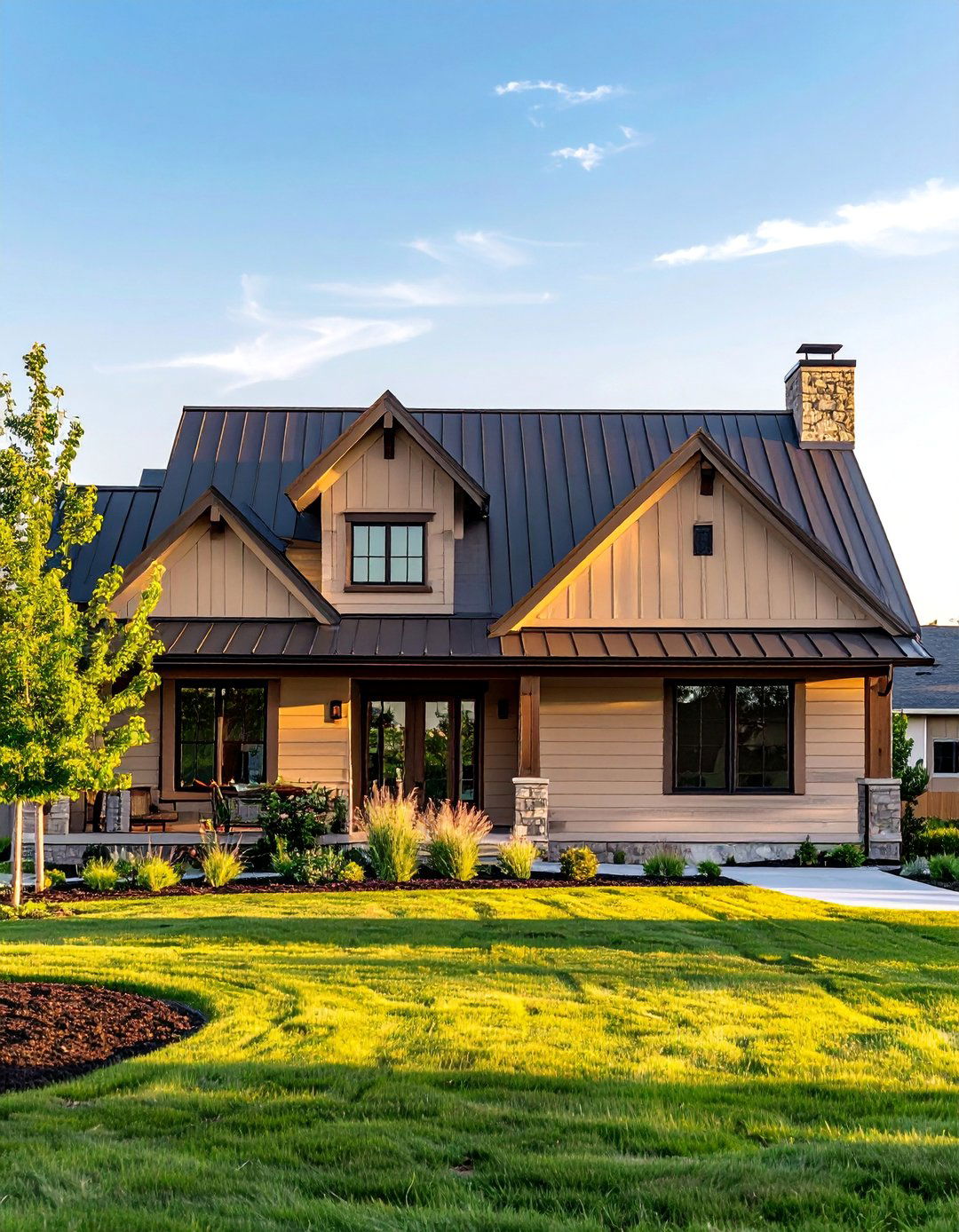
Pairing light tan natural clay siding with a sleek metal roof creates a beautiful blend of rustic warmth and modern durability. The soft, sandy tan color of the siding provides a neutral, inviting backdrop that feels both classic and contemporary. When topped with a standing-seam metal roof in a color like charcoal gray, bronze, or even a muted slate blue, the combination is visually striking. The clean lines of the metal roof offer a crisp contrast to the textured, earthy siding. This pairing is highly versatile, fitting perfectly with modern farmhouses, coastal cottages, and contemporary ranch homes, offering both aesthetic appeal and long-lasting performance.
8. Muted Gray Natural Clay Siding for a Contemporary Home
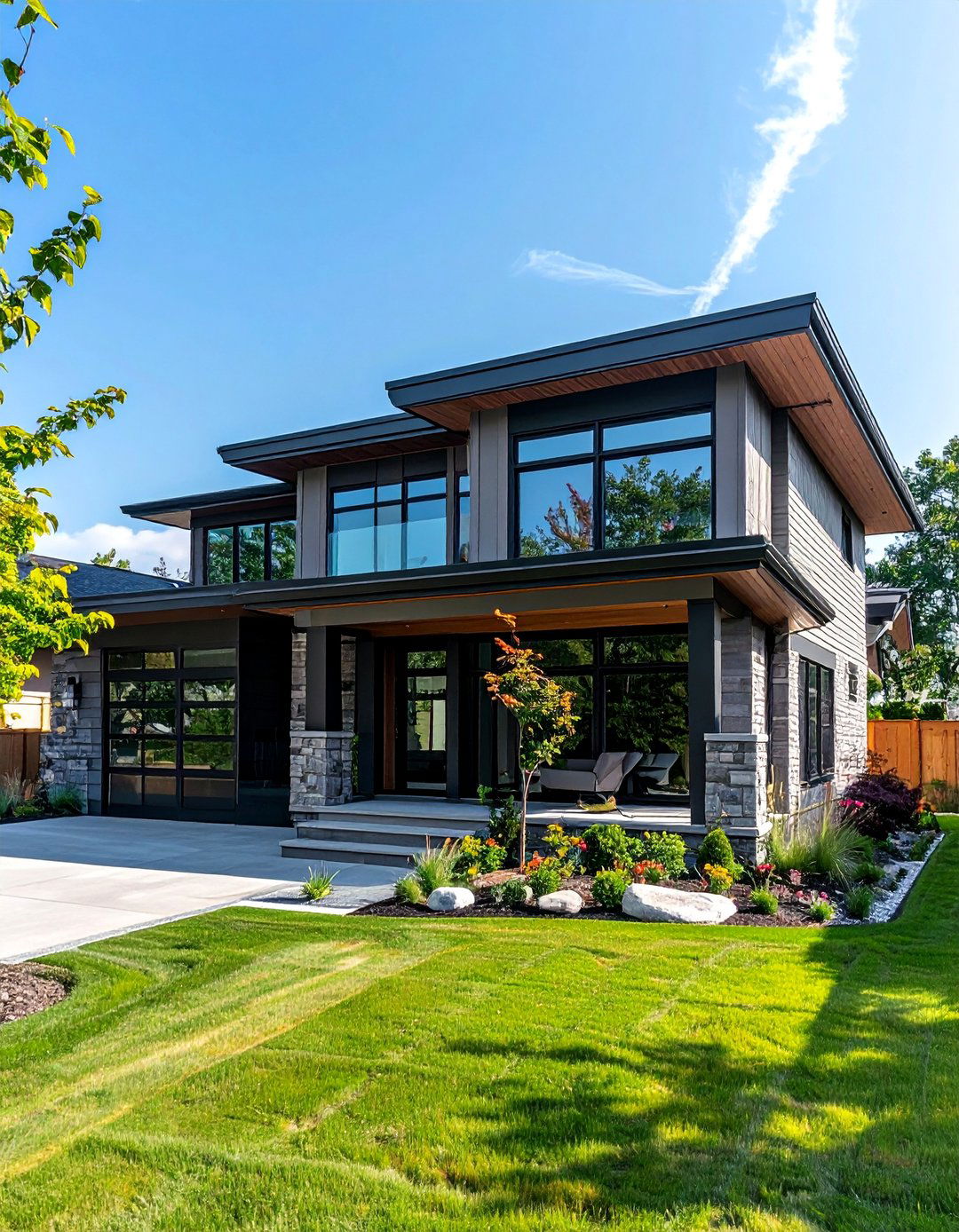
For a sleek and sophisticated contemporary design, muted gray natural clay siding offers a modern alternative to traditional earthy tones. This cool, understated color provides a chic, minimalist canvas that highlights architectural form and clean lines. The natural texture of the clay prevents the gray from feeling cold or industrial, adding subtle warmth and depth. This siding pairs exceptionally well with minimalist details like black-framed picture windows, flat rooflines, and metal accents in silver or black. The result is a home that feels both cutting-edge and grounded, proving that natural materials can be the foundation for a truly modern and elegant architectural statement.
9. Natural Clay Siding Combined with Natural Stone Veneer
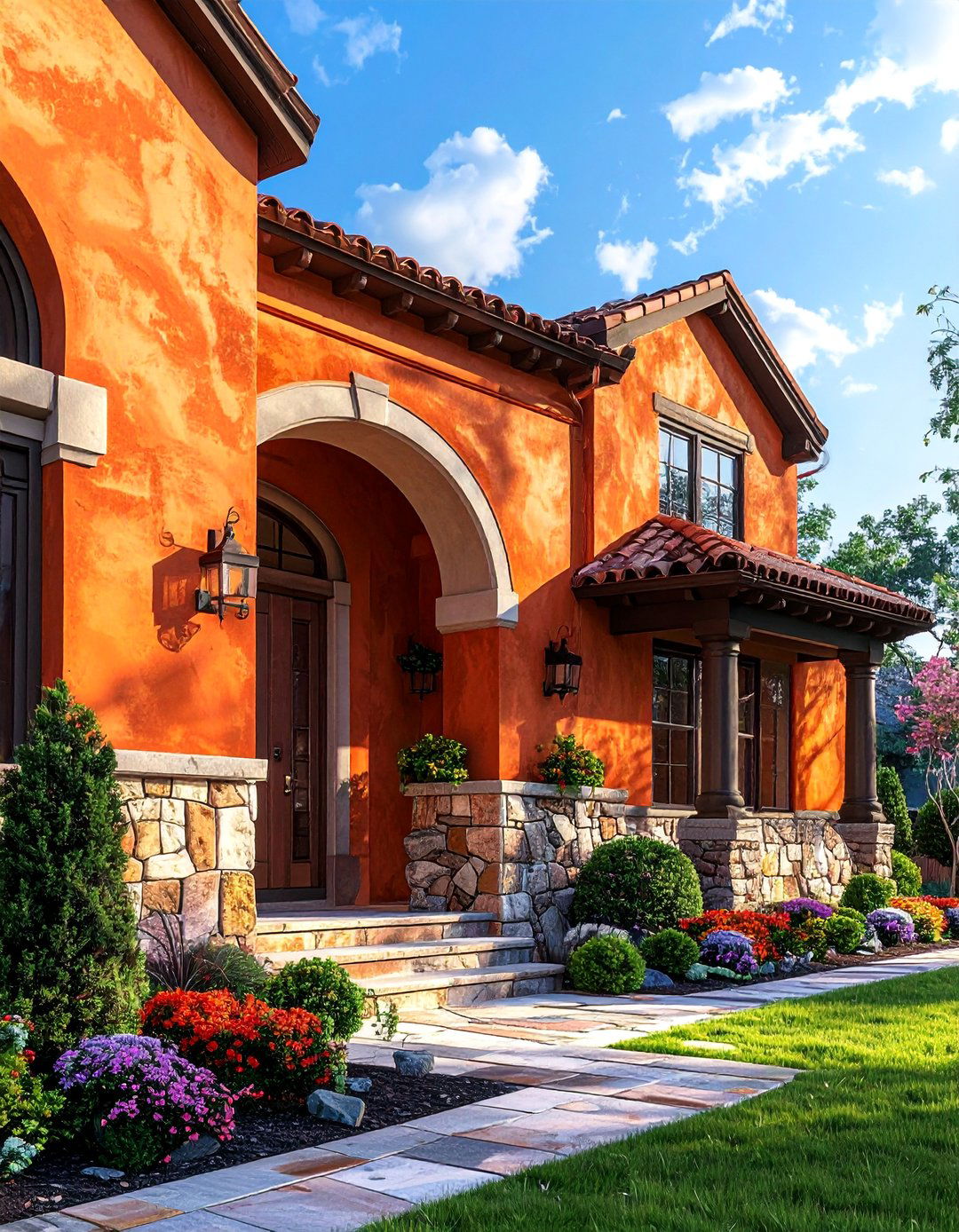
Combining natural clay siding with natural stone veneer creates a rich, textured exterior that celebrates organic materials. This pairing adds immense curb appeal and a sense of permanence to any home. For a balanced look, use a warm-toned clay siding, such as a soft terracotta or taupe, on the main body of the house. Then, apply a rugged stone veneer to the foundation, porch columns, or as a statement wall around the entryway. The varied colors and textures of the stone complement the smooth, consistent hue of the clay, resulting in a harmonious and visually captivating facade. This combination is perfect for Craftsman, mountain rustic, and traditional-style homes.
10. Deep Russet Natural Clay Siding in a Rustic Setting
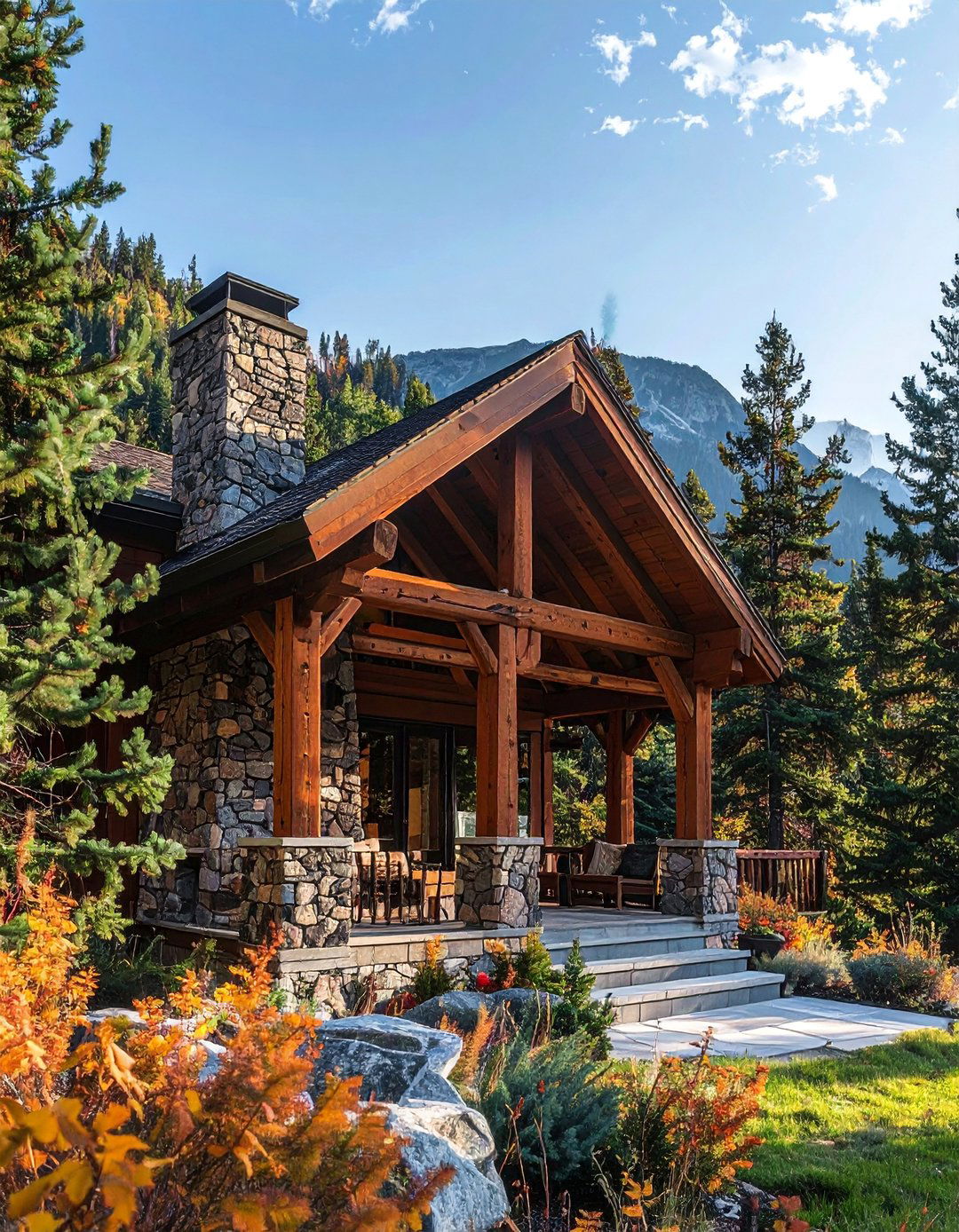
In a rustic or mountain setting, a deep russet natural clay siding provides a rich, warm facade that feels perfectly at home. This dark, reddish-brown hue echoes the colors of autumn leaves and fertile earth, anchoring the structure firmly in its natural environment. To complete the rustic aesthetic, pair this siding with heavy timber beams, a covered porch with substantial wooden posts, and dark bronze or black hardware. A stone chimney or foundation further enhances the rugged, handcrafted feel. This color choice creates a cozy and inviting retreat that appears to have grown organically from the landscape, offering a timeless look of comfort and strength.
11. Mediterranean Villa with Ochre Yellow Natural Clay Siding
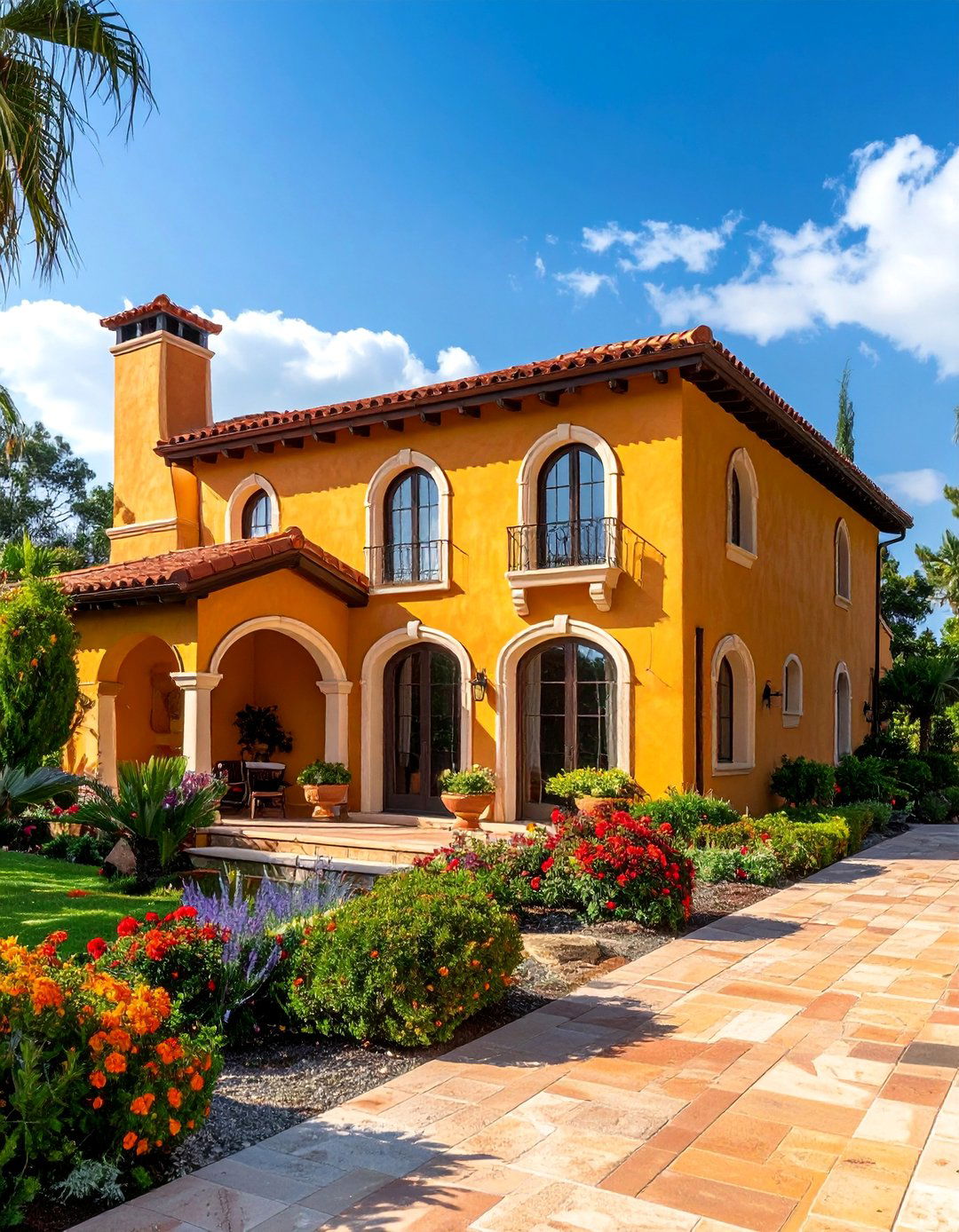
Capture the sunny charm of a Mediterranean villa with a warm, ochre yellow natural clay siding. This golden, earthy hue is reminiscent of the sun-drenched coastlines of Italy and Greece, creating a joyful and welcoming exterior. The key to the Mediterranean look is pairing this vibrant siding with classic architectural elements. Incorporate a low-pitched red tile roof, arched windows and doorways, and perhaps a wrought-iron balcony. Creamy white or off-white trim provides a soft, traditional contrast that keeps the look bright and airy. This design transports you to a seaside escape, creating a home that feels both elegant and blissfully relaxed.
12. Natural Clay Siding Paired with White Stucco
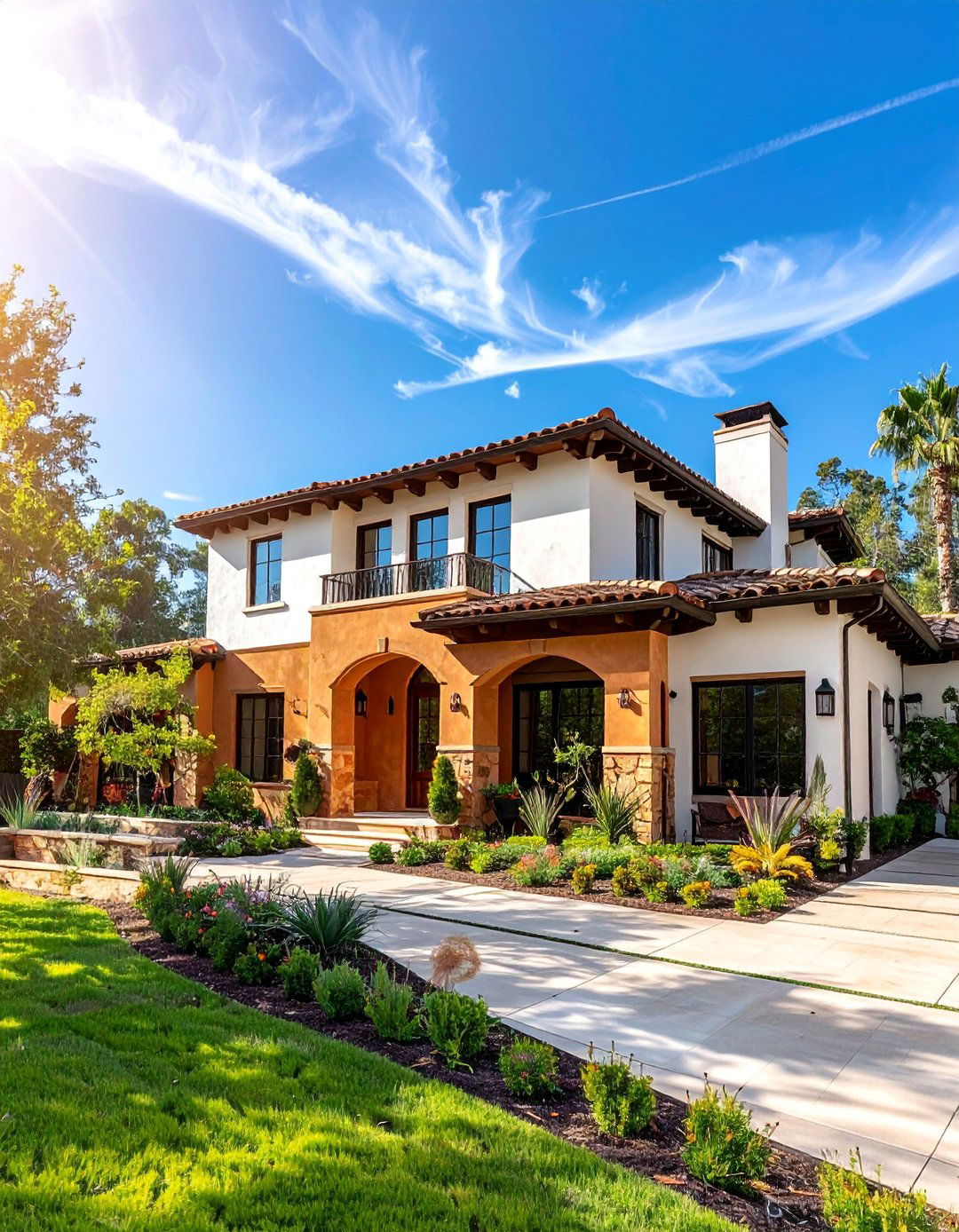
For a design that feels both clean and earthy, consider pairing natural clay siding with crisp white stucco. This combination creates a beautiful textural and tonal contrast that highlights the best qualities of each material. Use the clay siding, perhaps in a warm tan or muted red, on a primary section of the home, and apply the smooth white stucco to accent areas like gables, entryways, or even a full second story. The look is particularly effective on Spanish-style, modern Mediterranean, or transitional homes. It allows for a layered, sophisticated facade that feels bright and modern while retaining the warmth and organic feel of the natural clay.
13. Vertical Natural Clay Siding Panels in a Sandy Hue
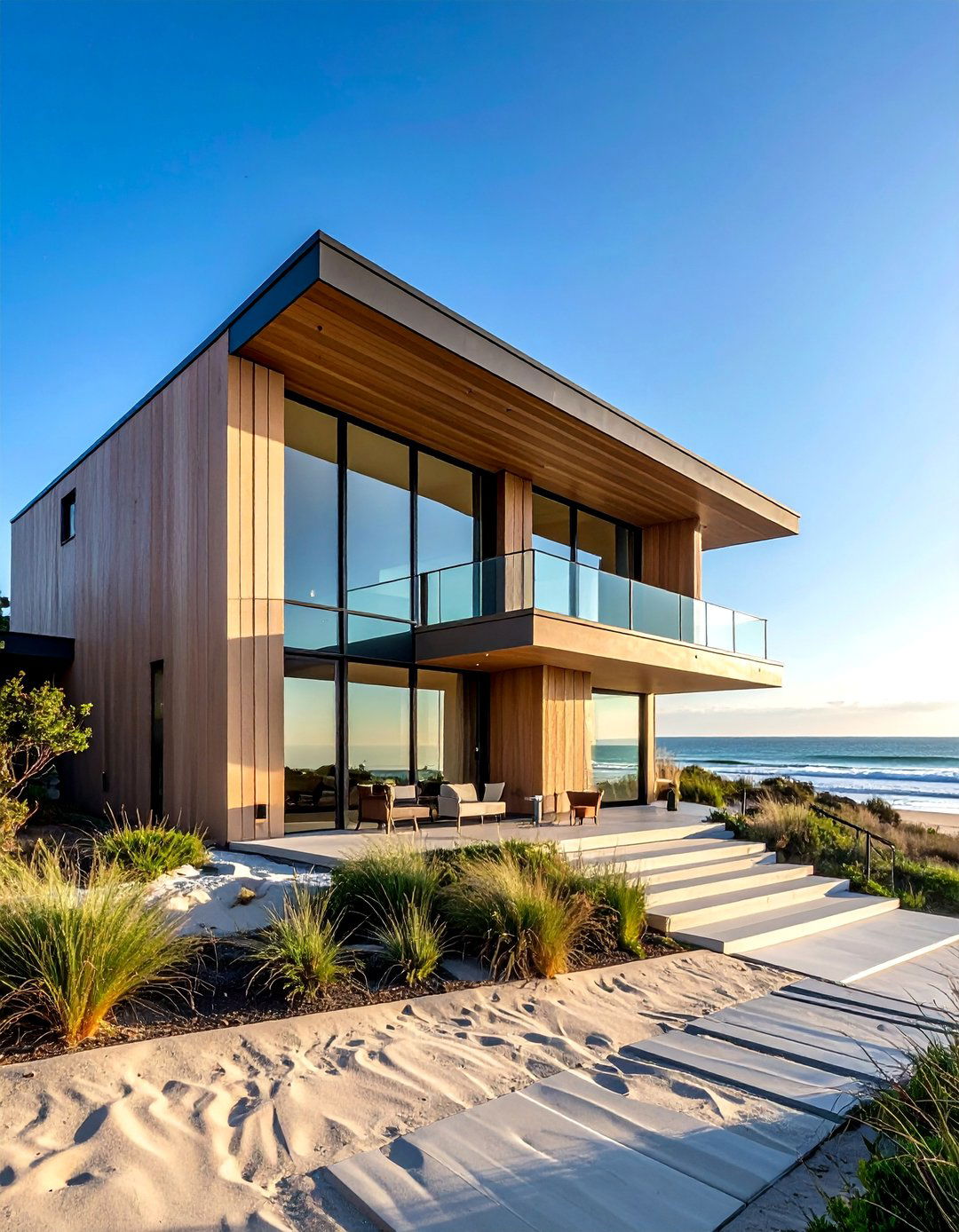
Shifting from traditional horizontal installation, using vertical natural clay siding panels in a sandy hue offers a fresh, modern aesthetic. This orientation draws the eye upward, making the home appear taller and more stately. A light, sandy color keeps the look bright and clean, evoking the feel of coastal dunes or serene desert landscapes. The clean lines of the vertical panels are perfect for contemporary and minimalist designs, creating a subtle yet impactful texture. Pair this siding with simple, dark-framed windows and minimal trim to let the unique vertical application take center stage, resulting in a sophisticated and elongated architectural profile.
14. Craftsman Bungalow with Dark Brown Natural Clay Siding
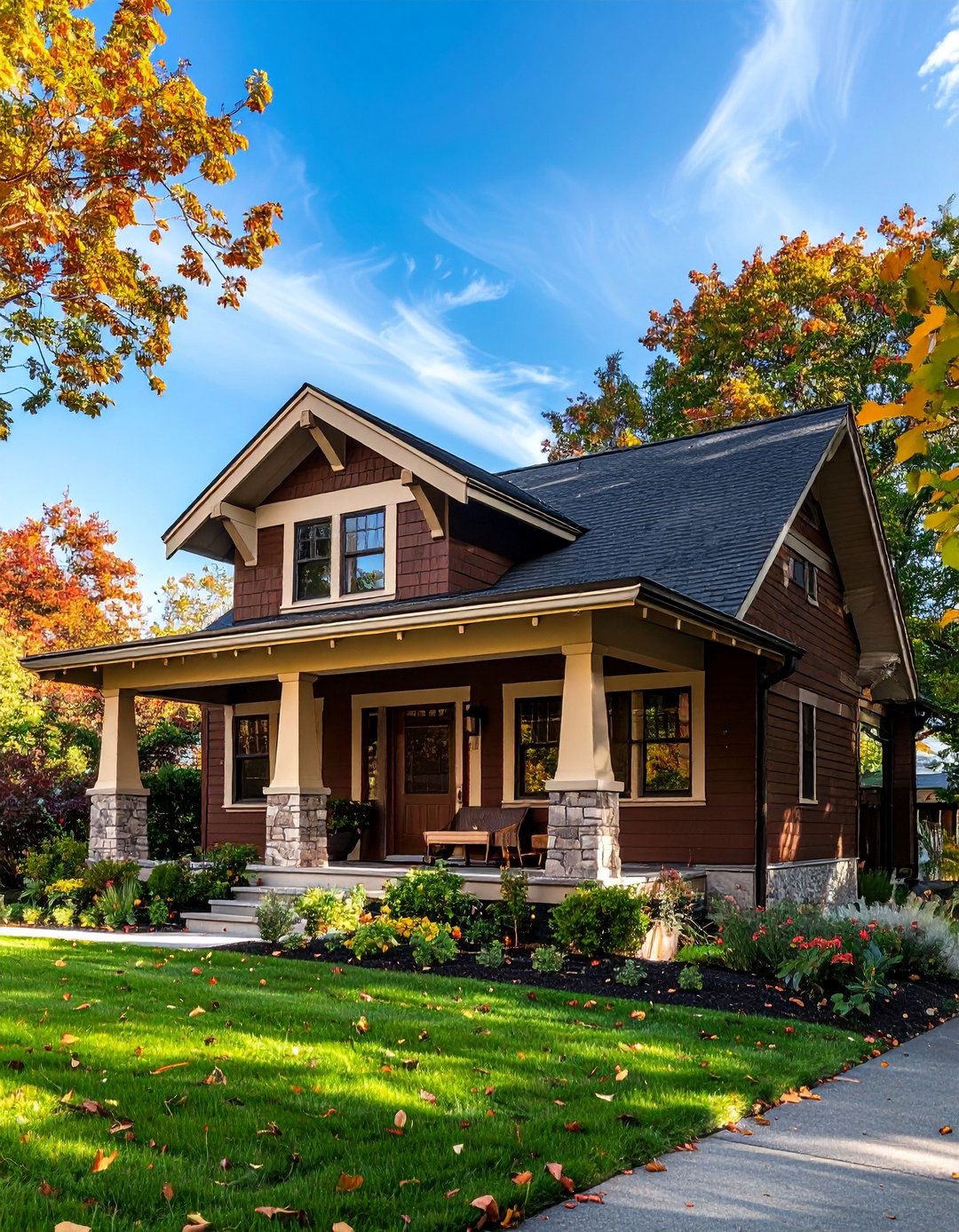
A dark brown natural clay siding is a perfect match for the iconic Craftsman bungalow. This deep, earthy color complements the style's emphasis on handcrafted quality and natural materials. It provides a rich backdrop for classic Craftsman features like low-pitched gable roofs with wide eaves, exposed rafters, and tapered porch columns set on stone or brick piers. Pair the dark brown siding with trim in a creamy off-white or a contrasting lighter earth tone to accentuate the home's structural details. This combination creates a cozy, substantial, and historically authentic appearance that is both inviting and deeply tied to the Arts and Crafts movement's principles.
15. Minimalist Design Using Cream-Colored Natural Clay Siding
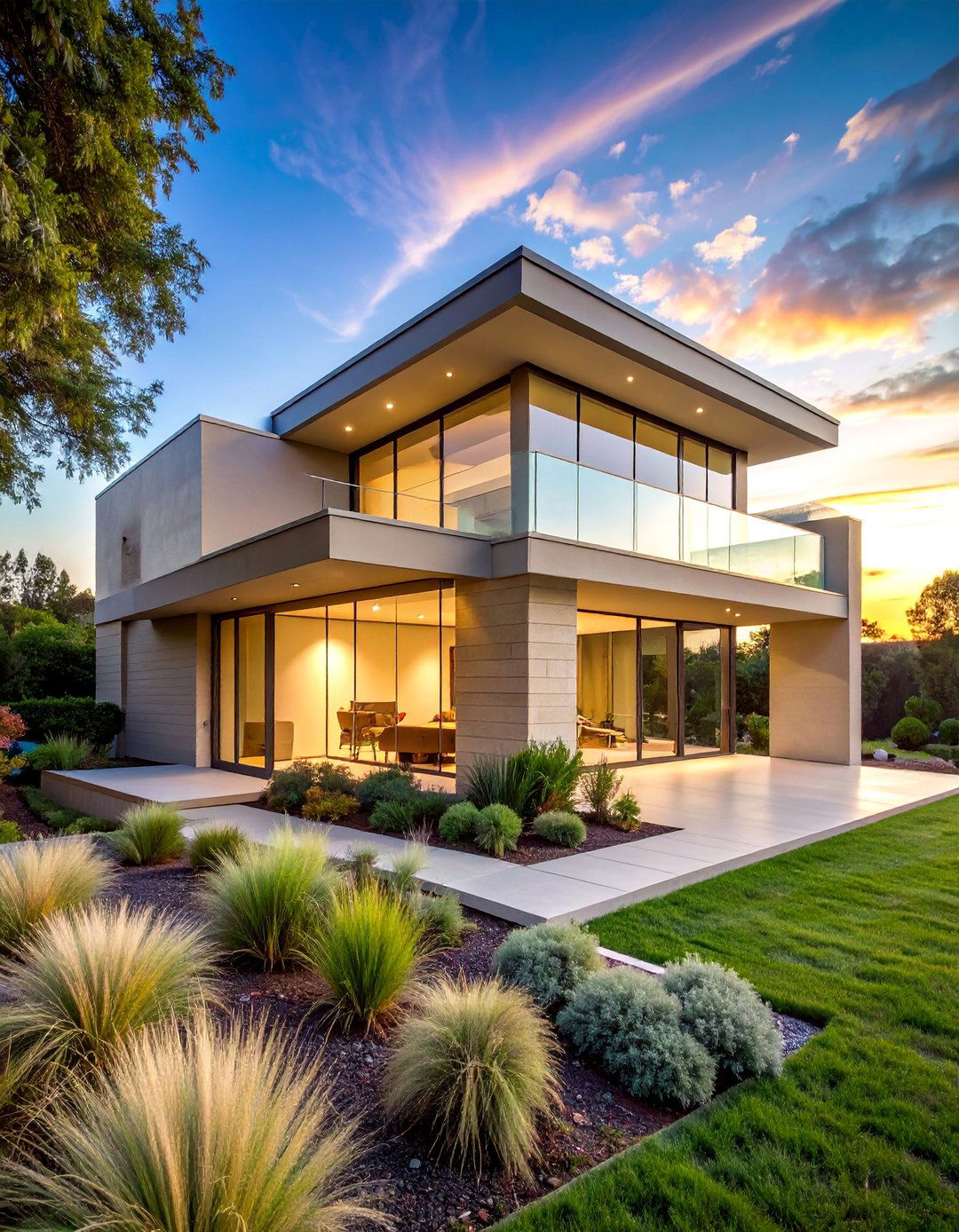
For a minimalist home, the beauty is in the simplicity of form and material. A cream-colored natural clay siding provides the perfect canvas, offering a soft, warm alternative to stark white. This understated hue allows the home's clean lines and architectural geometry to be the main focus. The inherent texture of the clay adds a subtle layer of organic warmth, preventing the minimalist design from feeling sterile. To maintain the clean aesthetic, use frameless windows, a flat roofline, and hidden gutters. This approach results in a serene and sophisticated exterior that is both modern and welcoming, celebrating form and the quiet beauty of natural material.
16. Ranch-Style Home with Adobe-Red Natural Clay Siding
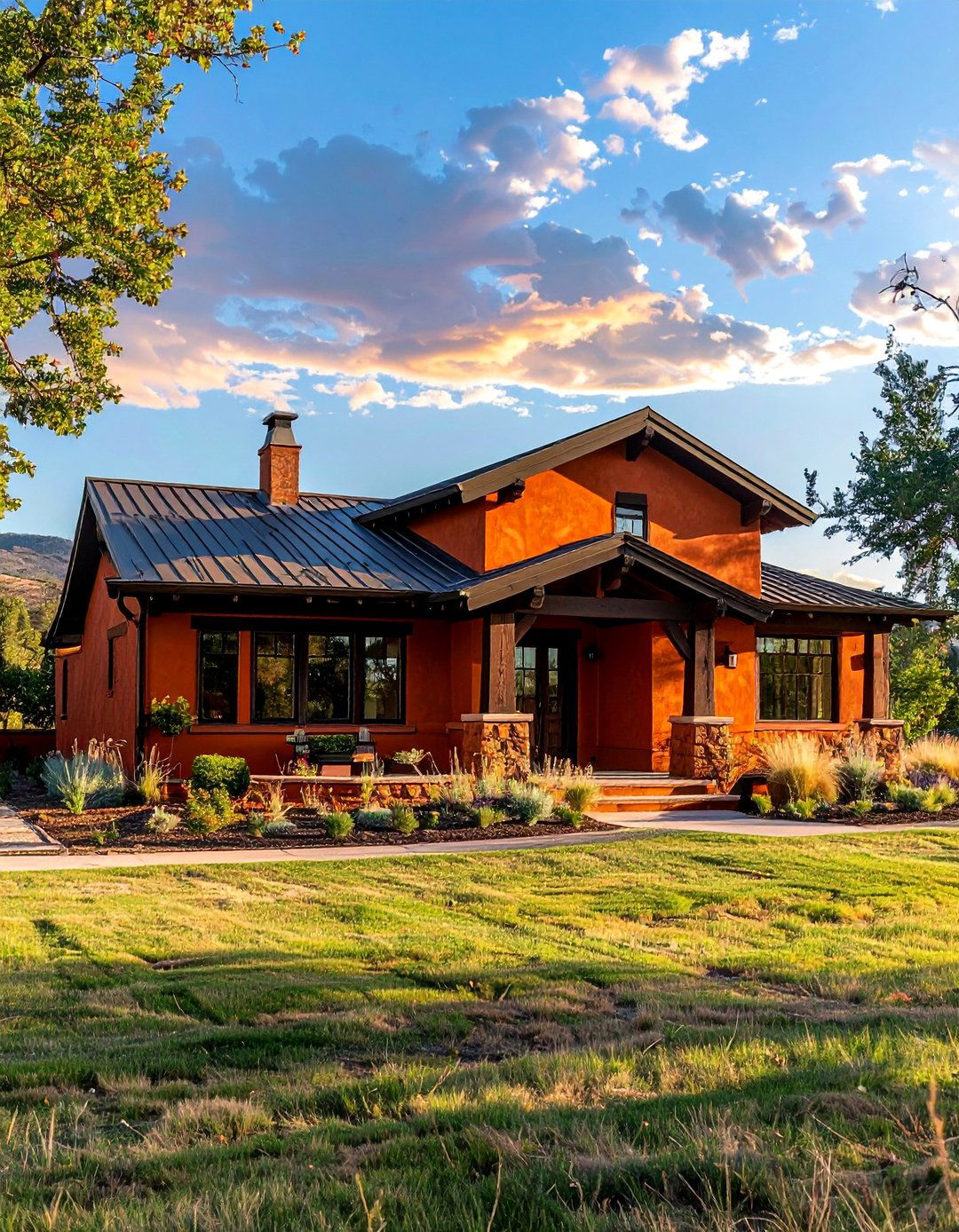
Transform a classic ranch-style home by cladding it in a vibrant adobe-red natural clay siding. This single design choice infuses the low-slung, horizontal profile of a ranch house with the distinct character of the American Southwest. The warm, reddish hue is inviting and full of personality, instantly boosting its curb appeal. To complement the adobe-red siding, incorporate elements like dark wood trim for the fascia and window frames, a low-pitched roof, and drought-tolerant landscaping with gravel and native plants. This combination honors the ranch's simple layout while giving it a bold and memorable aesthetic that is both rustic and stylish.
17. Coastal Home with Light Gray Natural Clay Siding
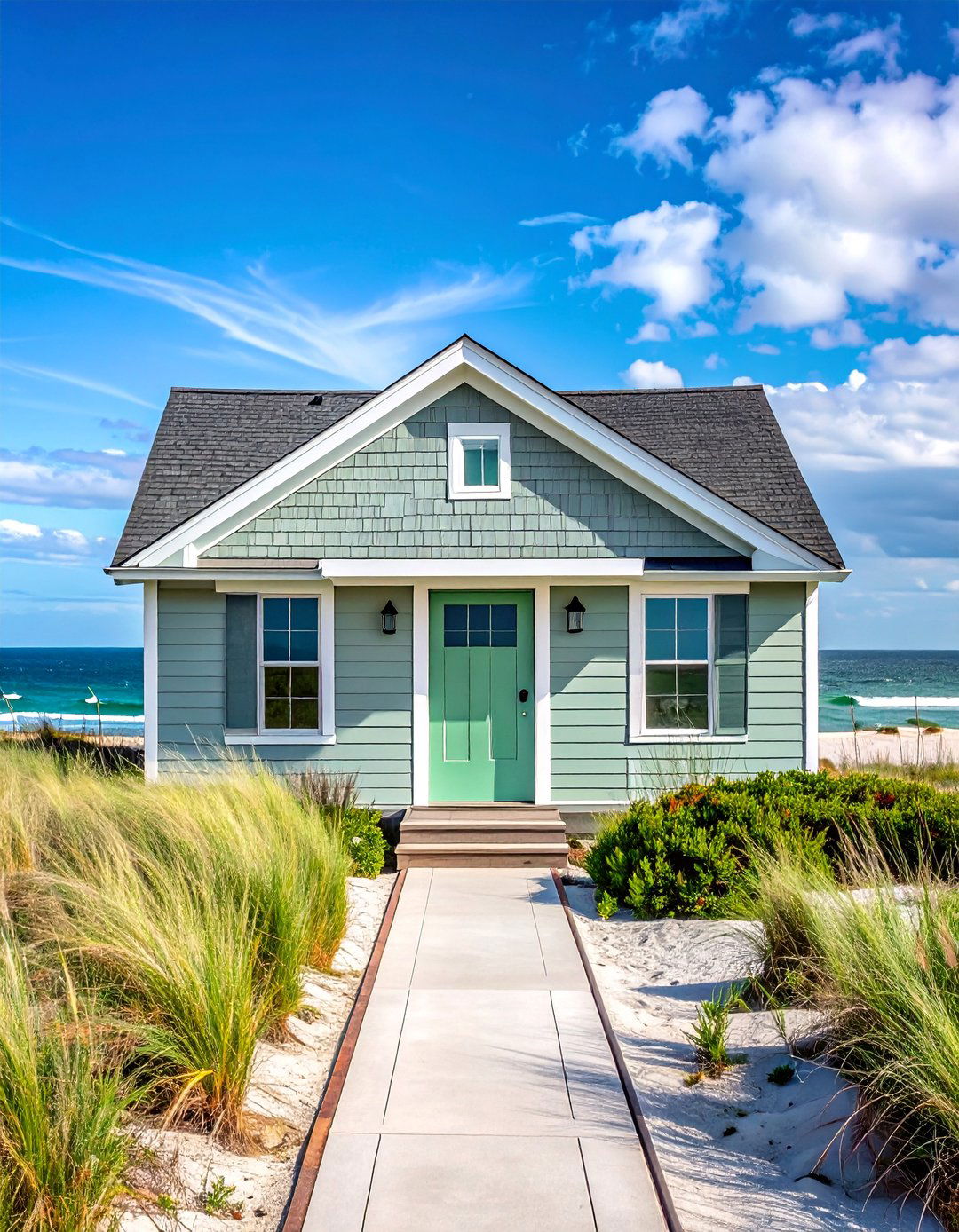
A light gray natural clay siding offers a sophisticated and durable option for a coastal home. This soft, weathered hue mimics the color of driftwood and overcast seaside skies, creating a serene and calming exterior that fits perfectly into a beach environment. Unlike wood, clay siding withstands salt air and moisture exceptionally well. Pair this light gray siding with crisp white trim for a classic coastal look, and consider adding a pop of color with a navy blue or seafoam green front door. Large windows to capture the views and a spacious deck complete the beach house aesthetic, resulting in a home that is both beautiful and built to last.
18. Natural Clay Siding Accent Wall on a Mixed-Material Exterior
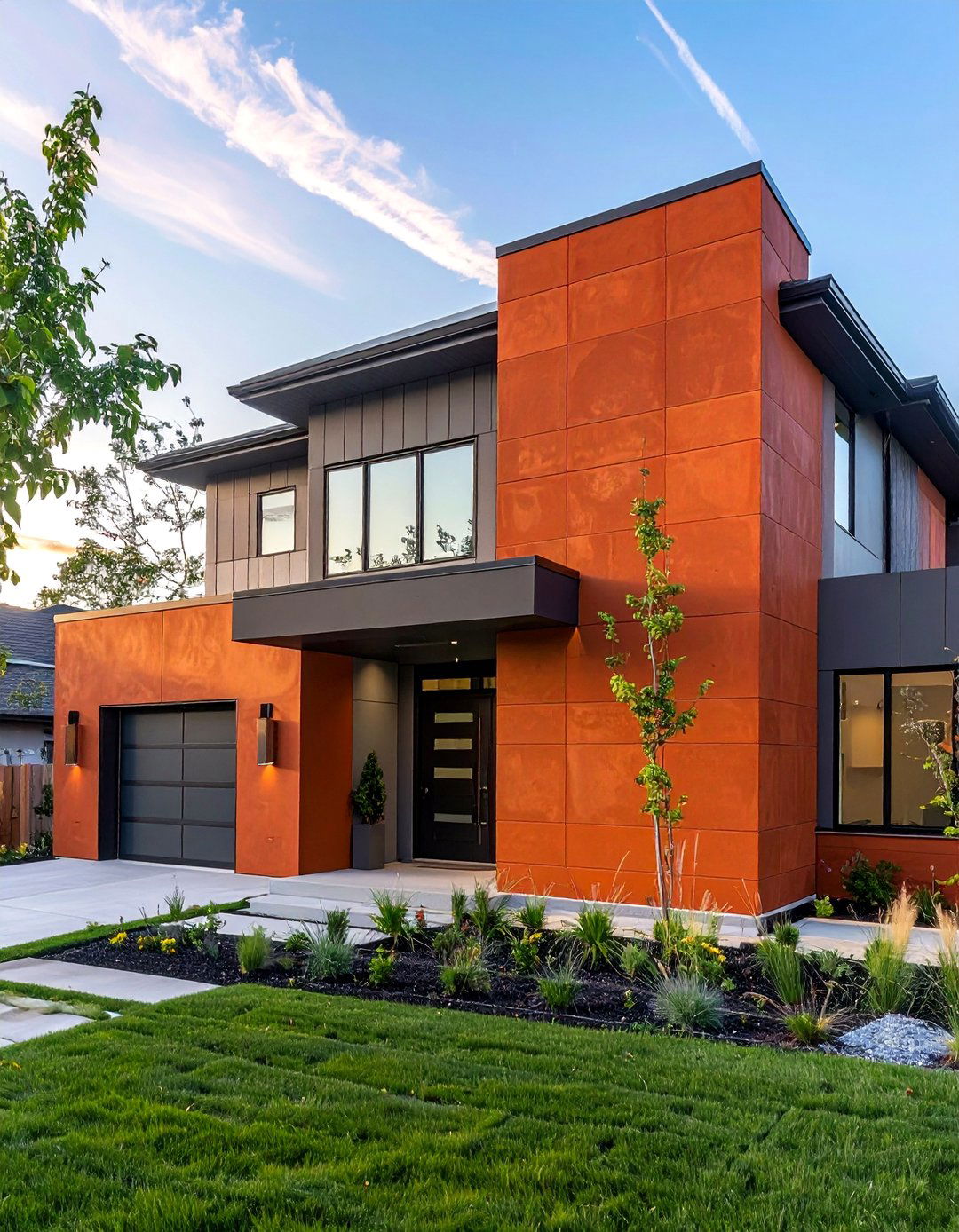
For homes that feature a mix of exterior materials, using natural clay siding as an accent wall can create a stunning focal point. Imagine a home primarily clad in light-colored stucco or fiber cement; adding a section of rich, terracotta-colored clay siding around the entryway or on a prominent gable instantly adds warmth, texture, and visual interest. This design strategy allows you to enjoy the unique beauty of clay without committing to siding the entire house. It’s a perfect way to break up monolithic surfaces and introduce an element of organic, handcrafted quality, giving the home a custom-designed and thoughtfully detailed appearance.
19. Warm Taupe Natural Clay Siding with Bronze Accents
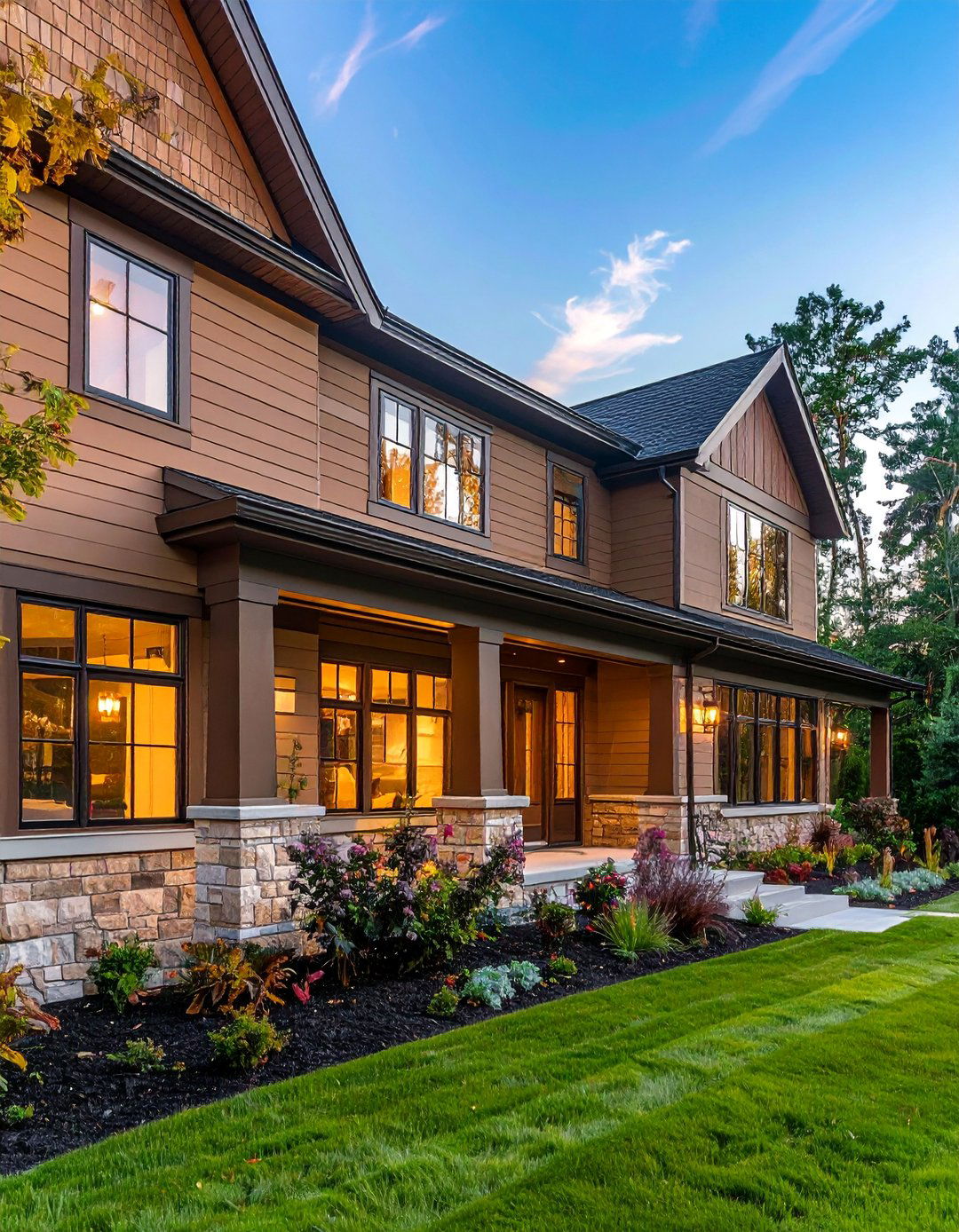
A warm taupe natural clay siding strikes a beautiful balance between gray and brown, offering a versatile and sophisticated neutral base for your home's exterior. This elegant, muted color pairs exceptionally well with metallic bronze accents. Consider using bronze for window frames, gutters, downspouts, and exterior light fixtures. The warm, reflective quality of the bronze brings out the richness of the taupe siding, creating a cohesive and high-end look. This combination is ideal for transitional or contemporary homes, providing a subtle yet luxurious color palette that feels both modern and timeless, ensuring your home stands out with understated class.
20. Urban Townhouse with Sleek Umber Natural Clay Siding
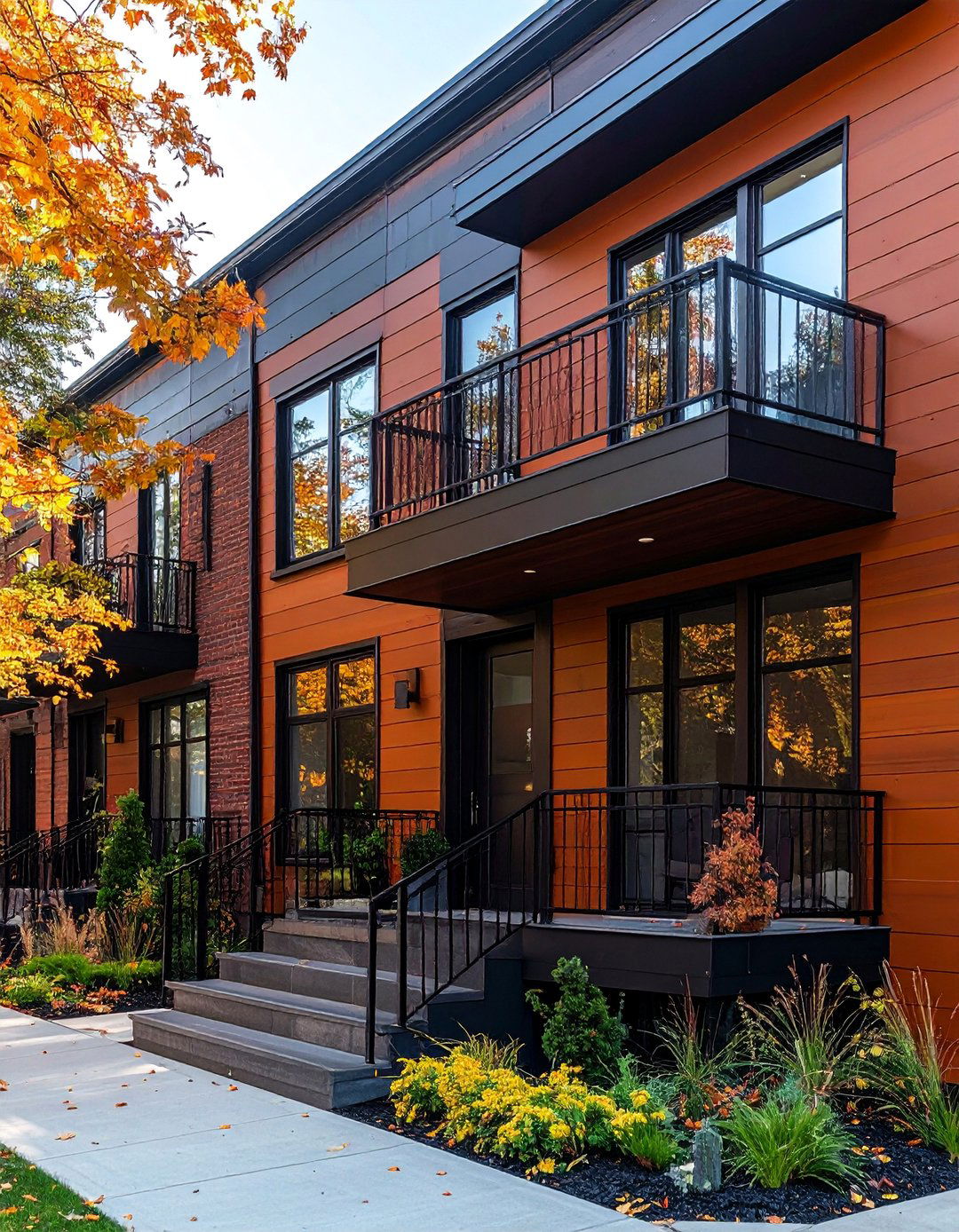
An urban townhouse can achieve a look of modern sophistication with sleek umber natural clay siding. This deep, rich brown color has a touch of gray, giving it a contemporary edge that works perfectly in a city setting. Applied in smooth, large panels, the umber siding creates a bold, monolithic statement that is both stylish and grounding. Pair it with black metal railings, large industrial-style windows, and a flat roofline to enhance the modern urban aesthetic. This design choice proves that natural, earthy materials can be used to create a chic and polished facade that stands out in a dense architectural landscape.
Conclusion:
Natural clay siding offers a rich and diverse palette for creating stunning home exteriors. From the rustic charm of terracotta and russet to the modern sophistication of muted gray and taupe, these earthen colors provide timeless appeal. By thoughtfully pairing them with complementary materials like wood, stone, and metal, homeowners can achieve a design that is both unique and harmonious with its surroundings. Whether for a contemporary build or a classic bungalow, natural clay siding proves to be a versatile, durable, and beautiful choice that connects a home to the natural world.

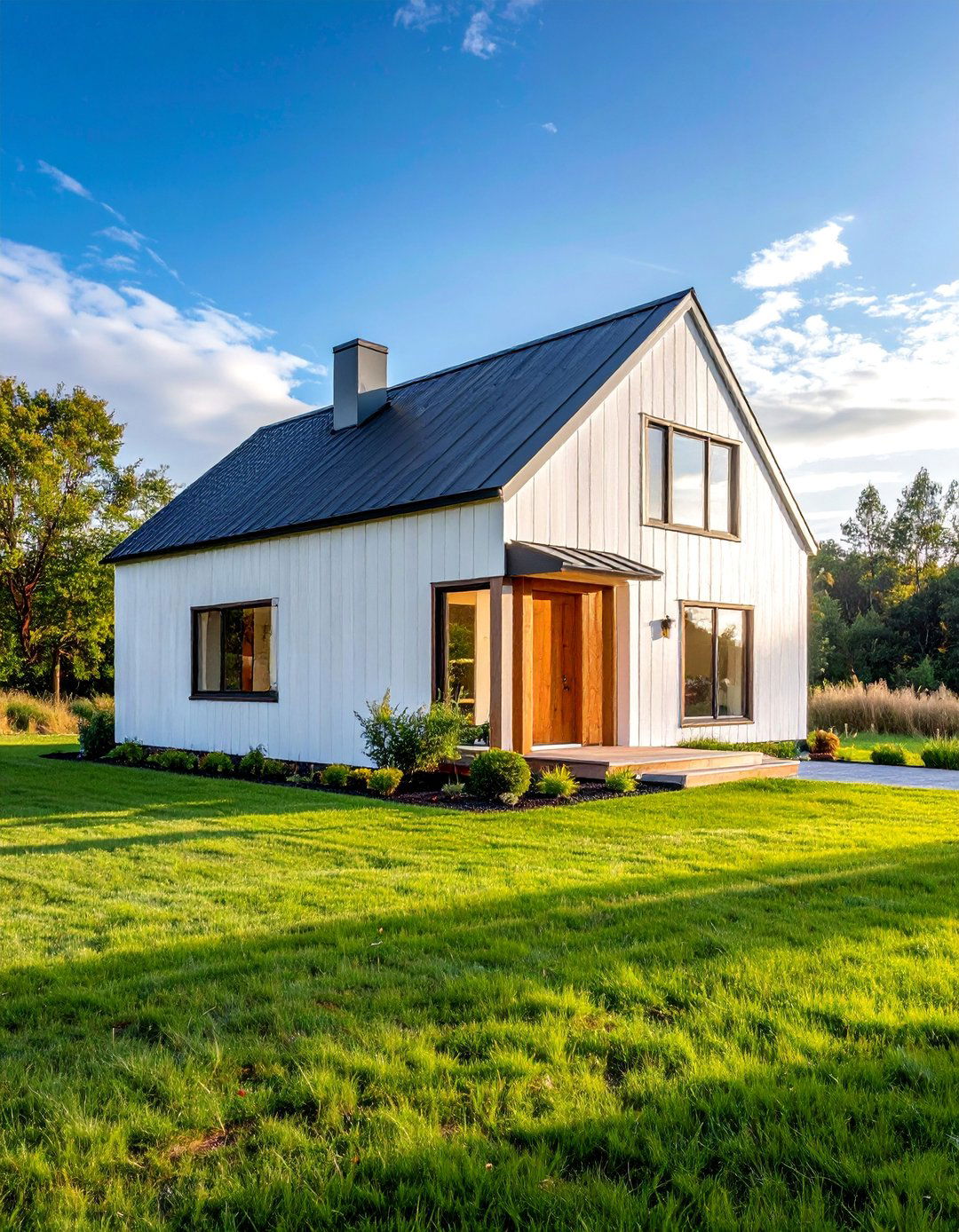
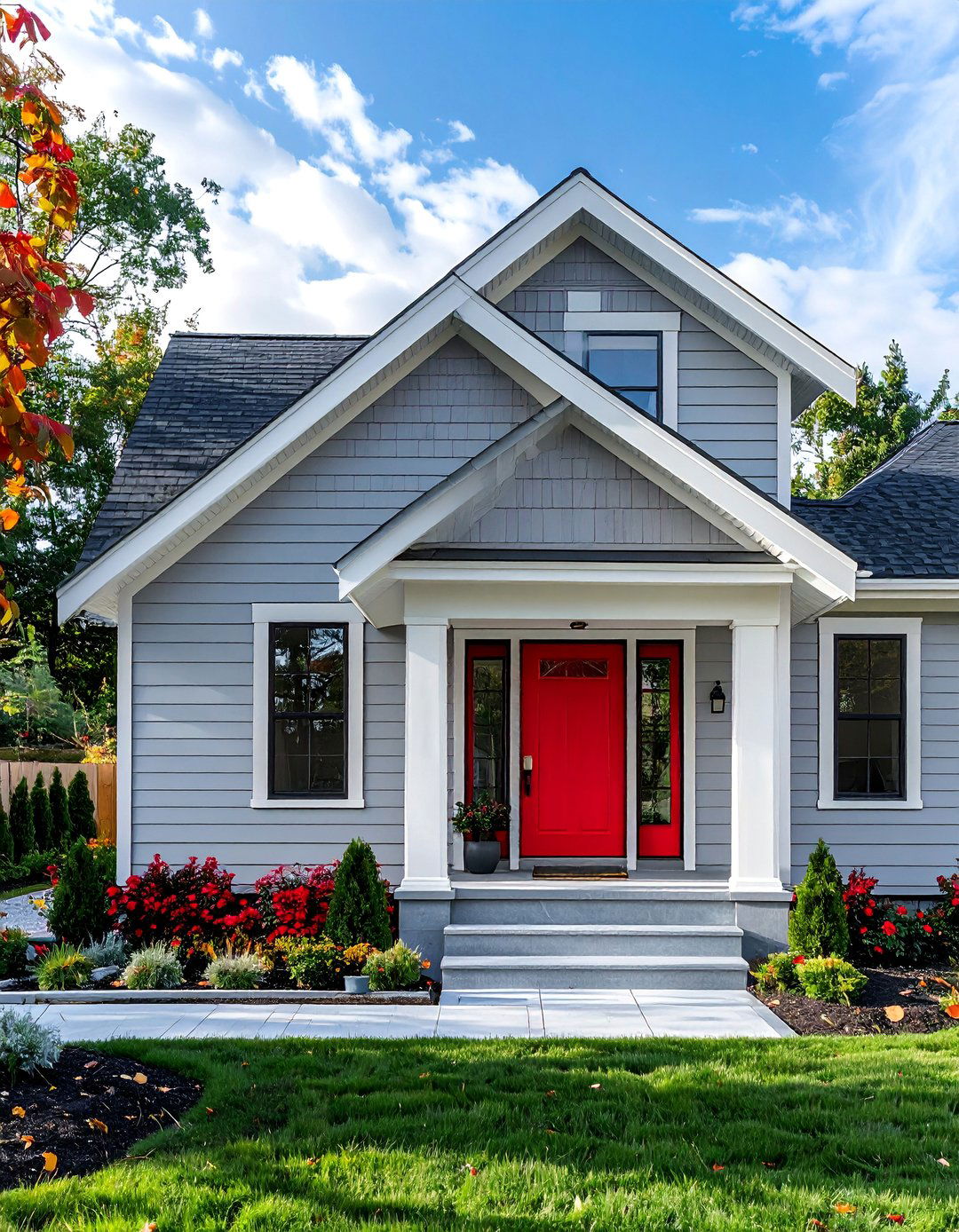
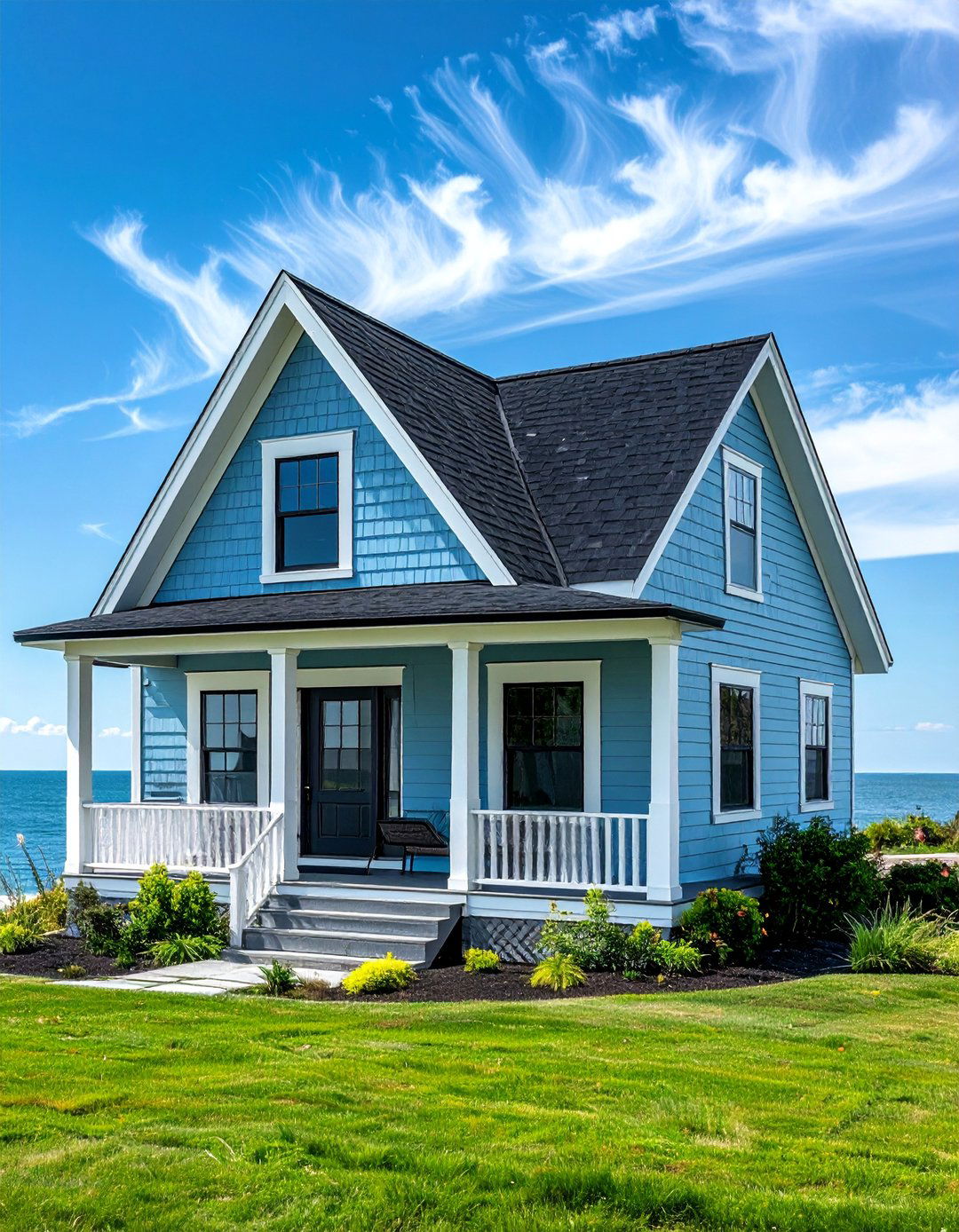
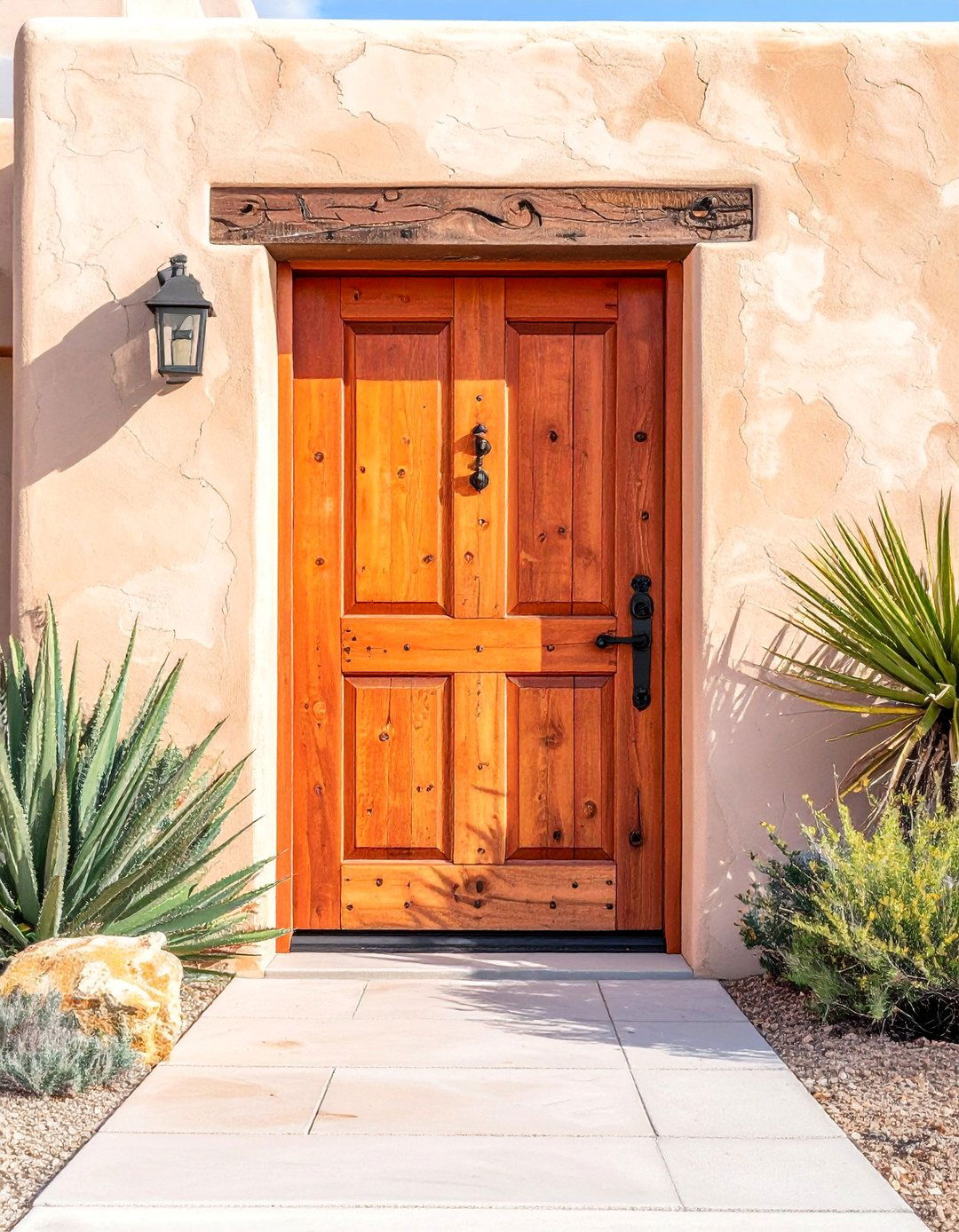
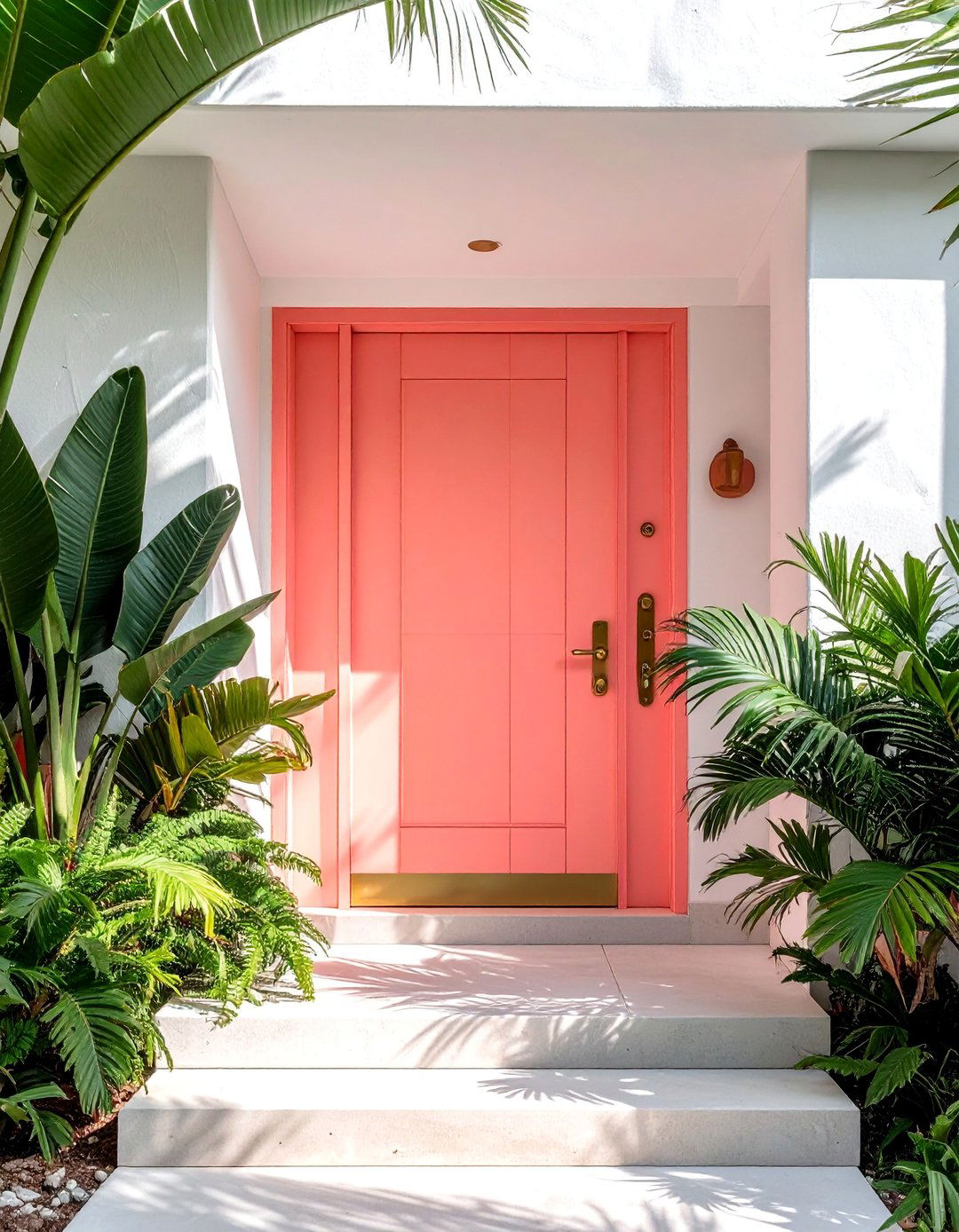
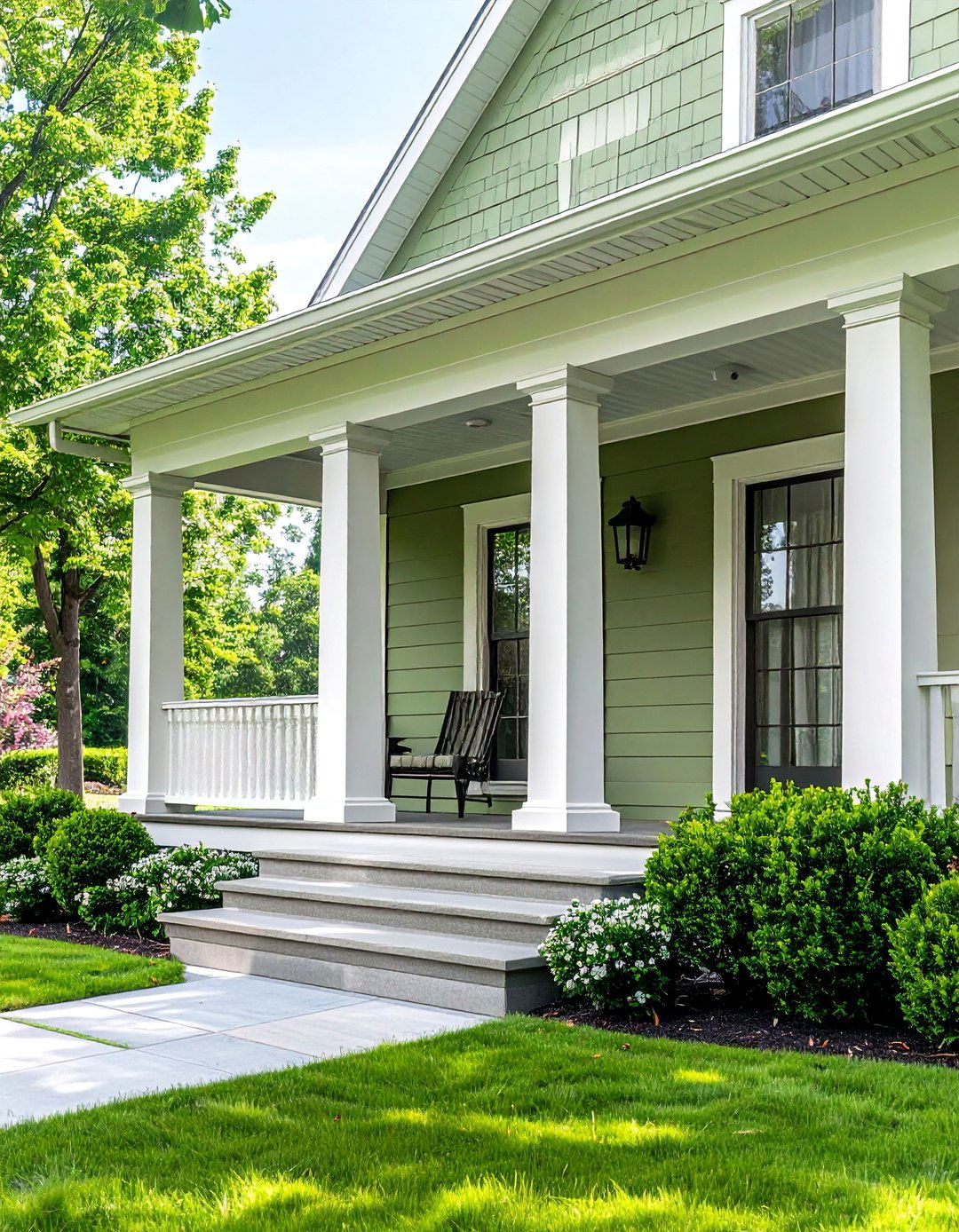
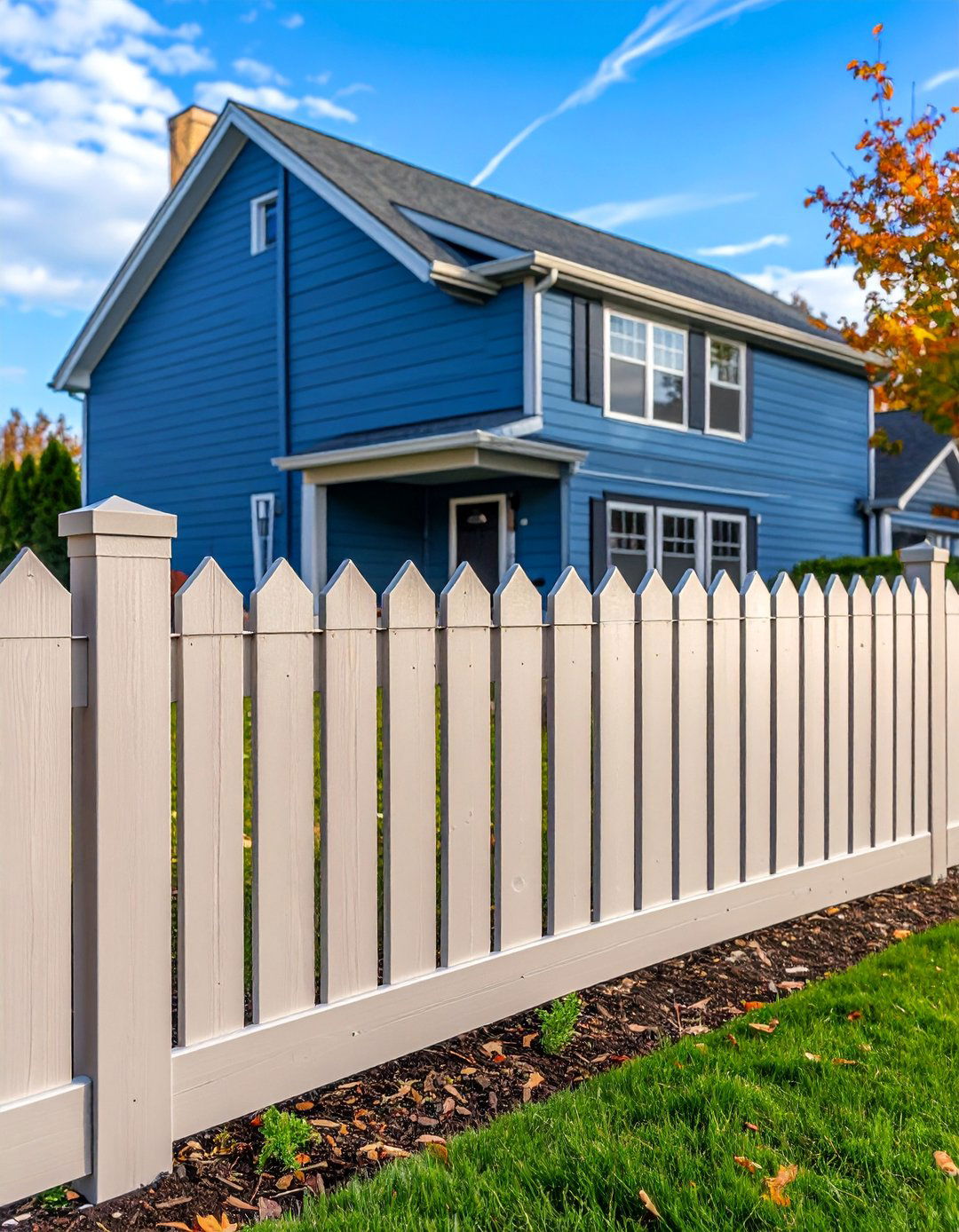
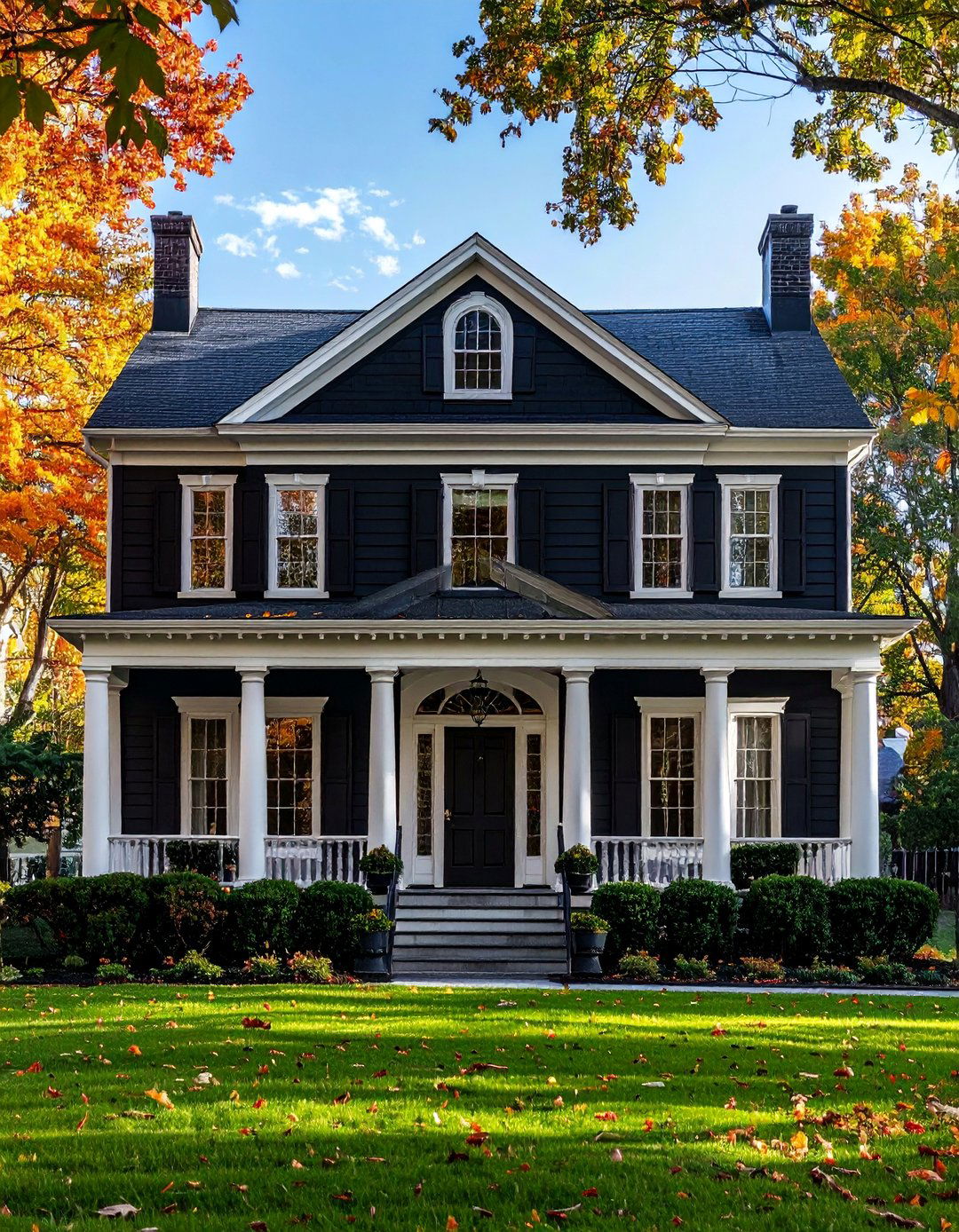
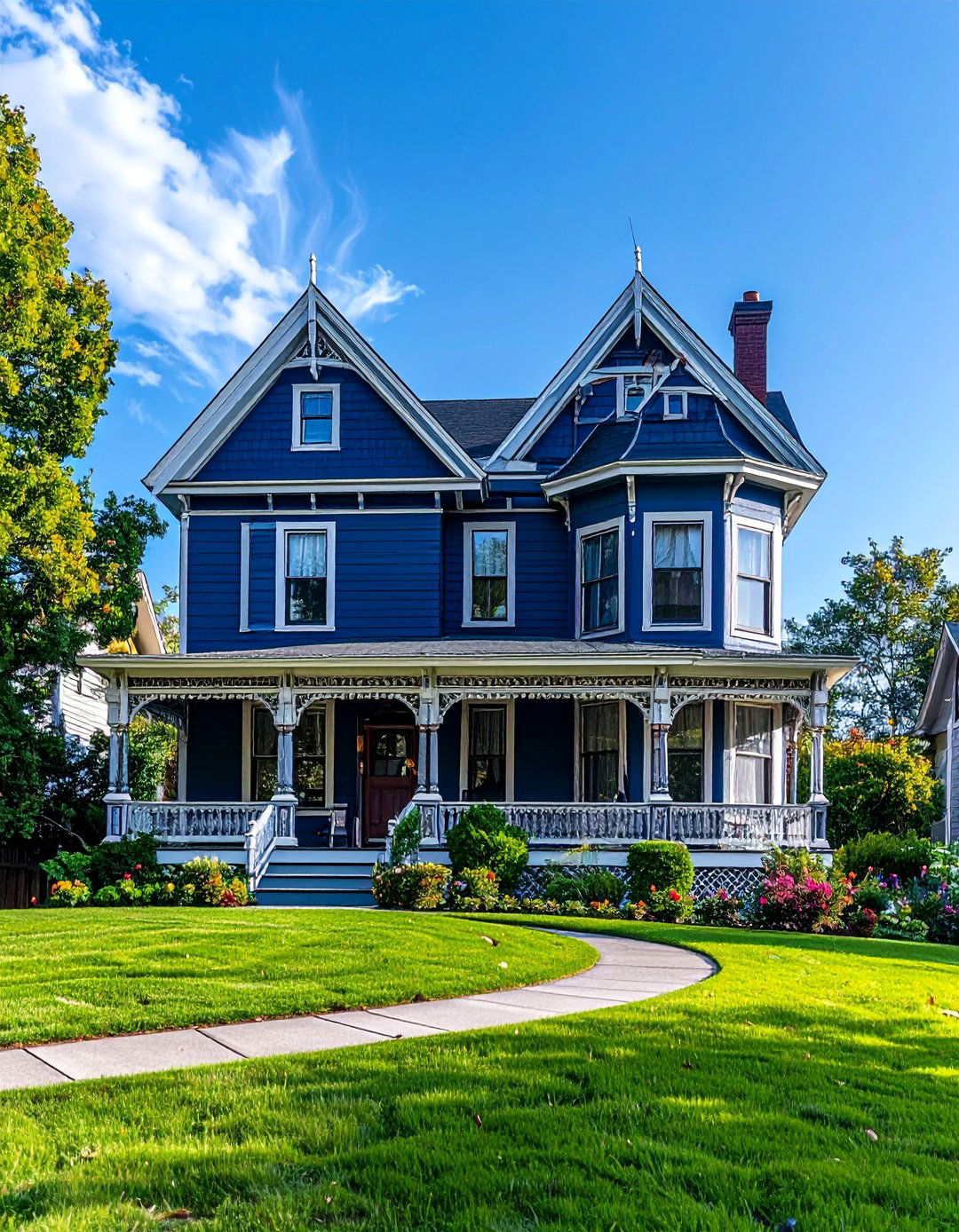
Leave a Reply